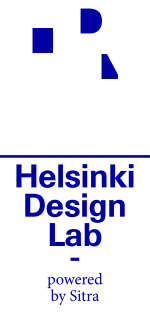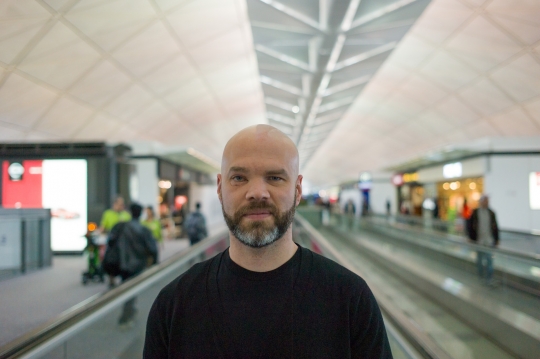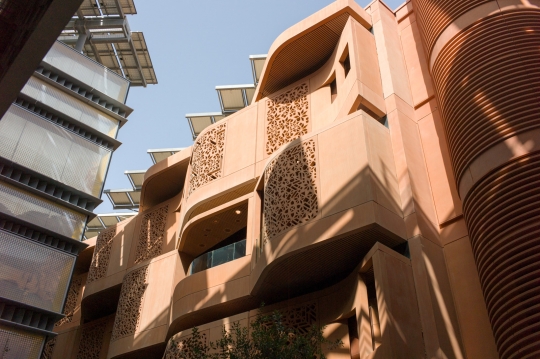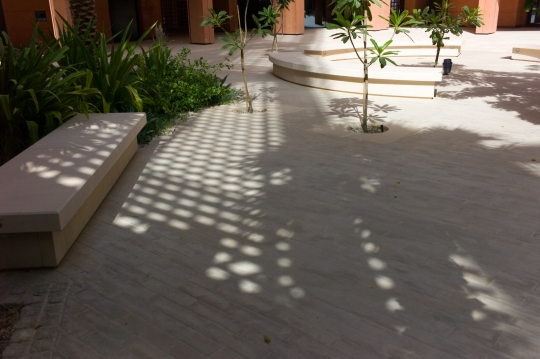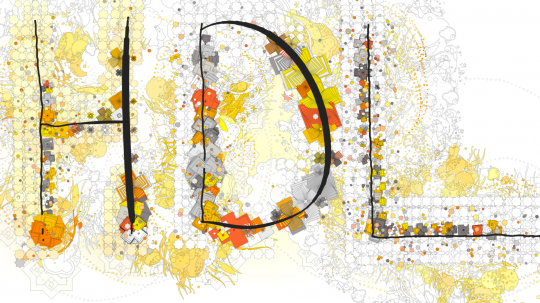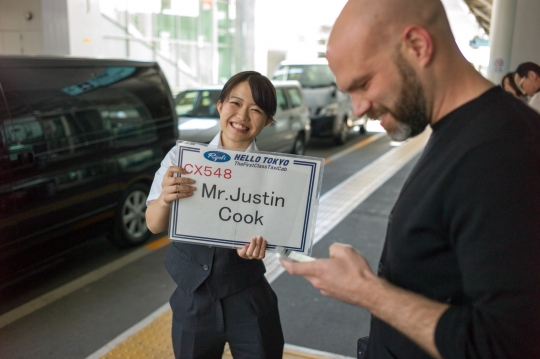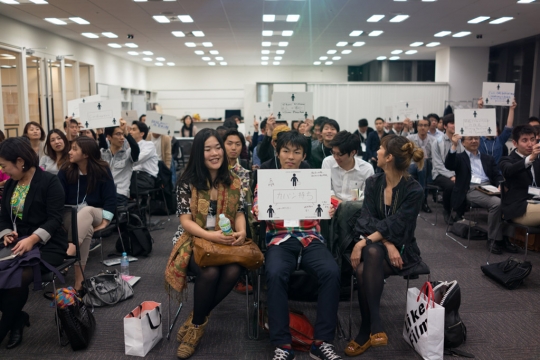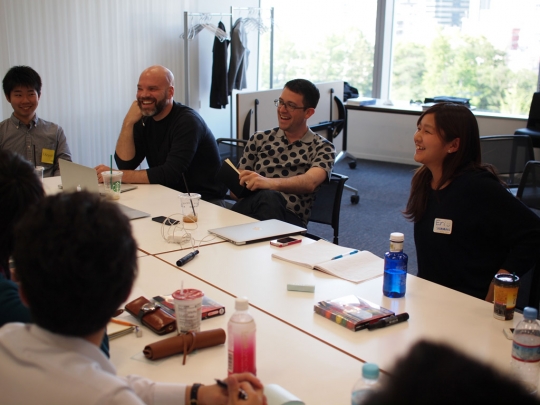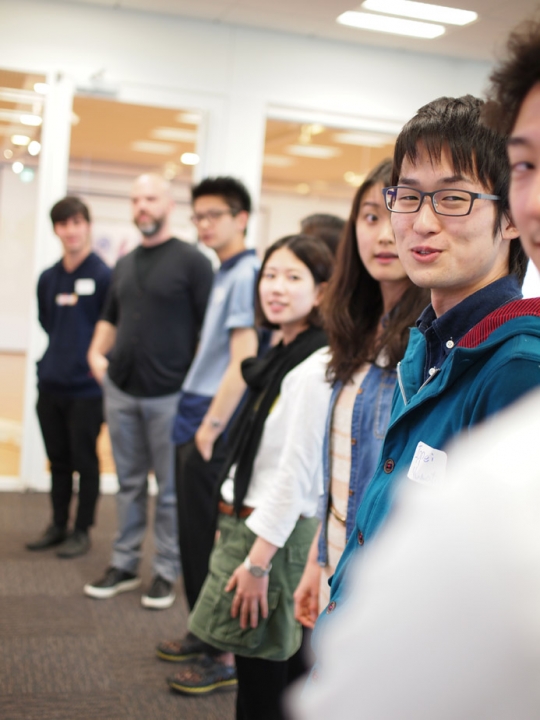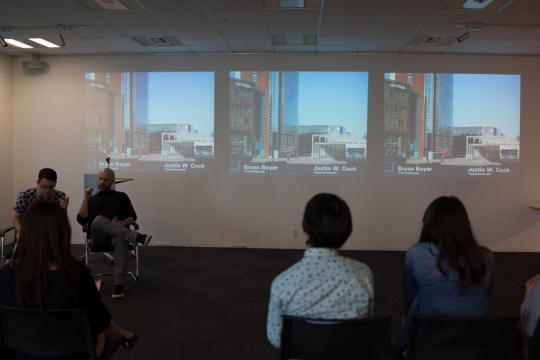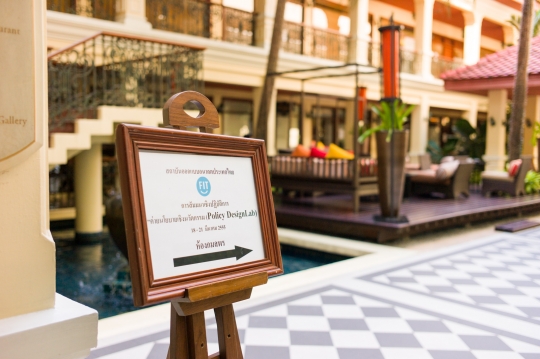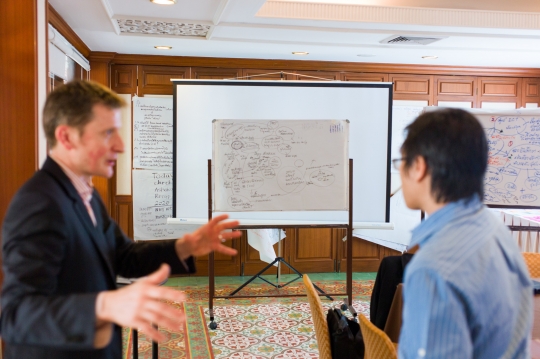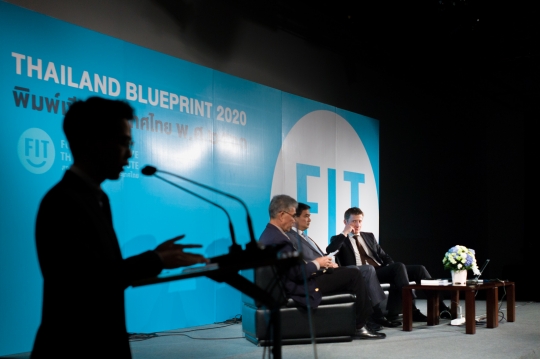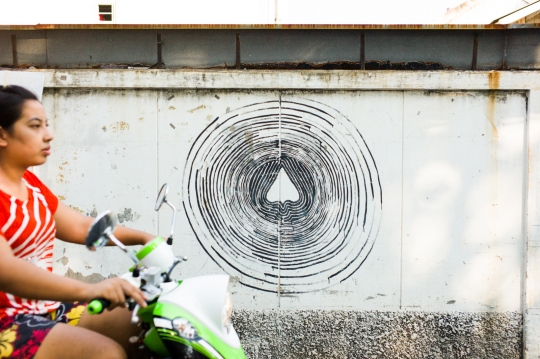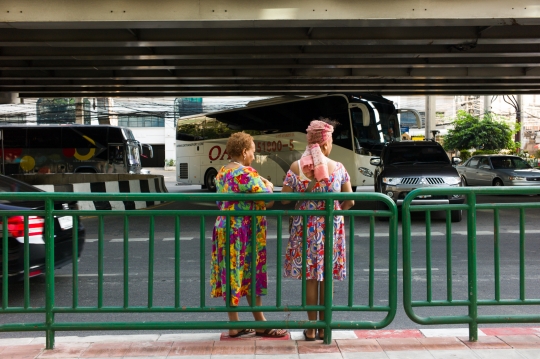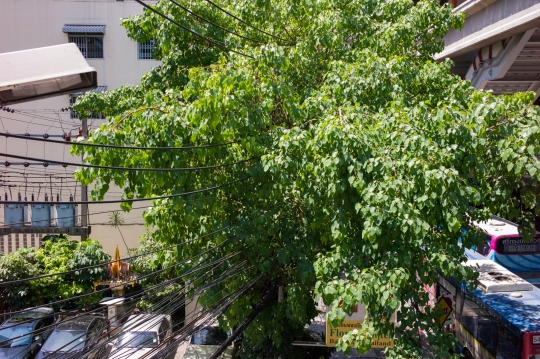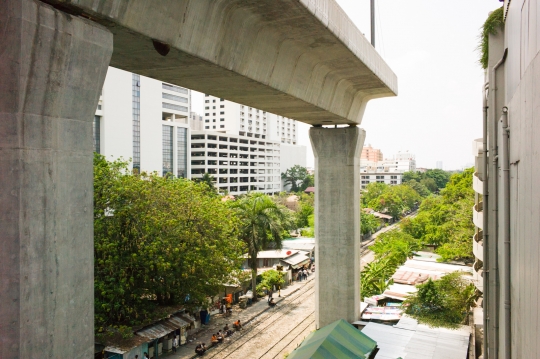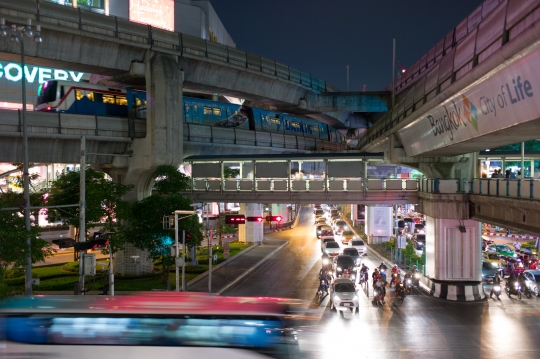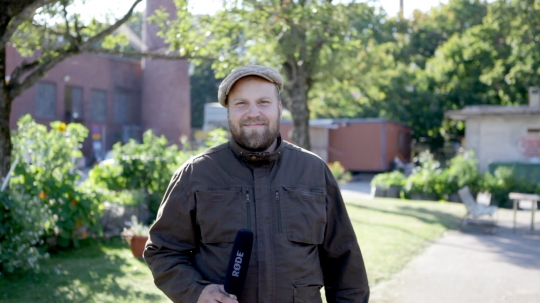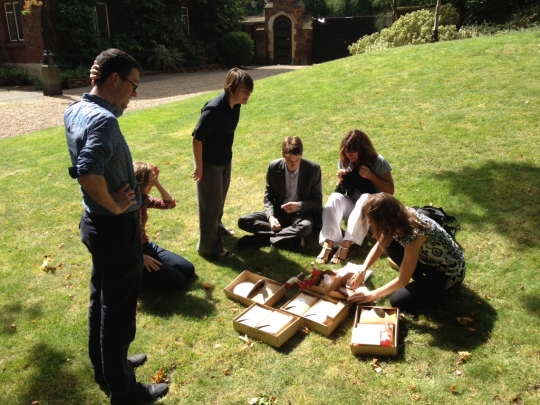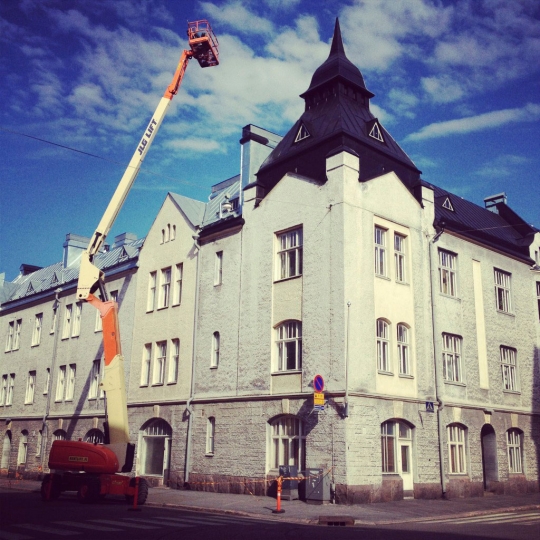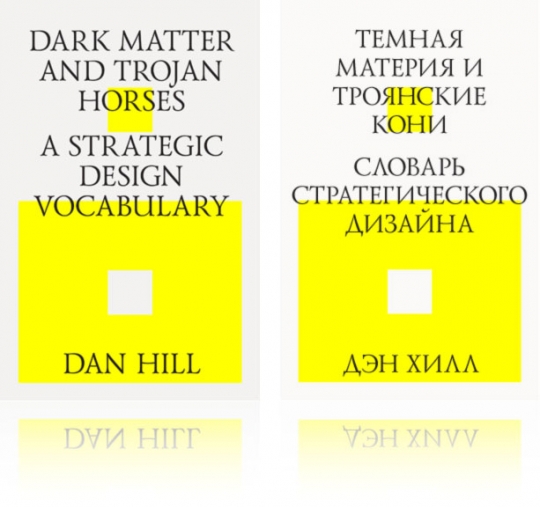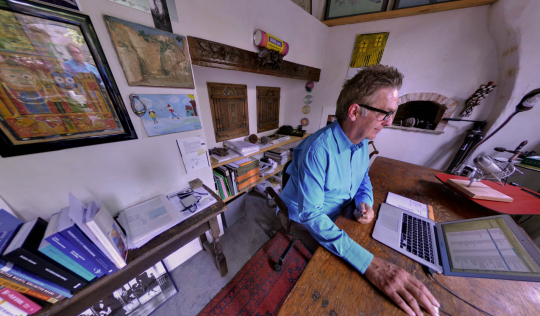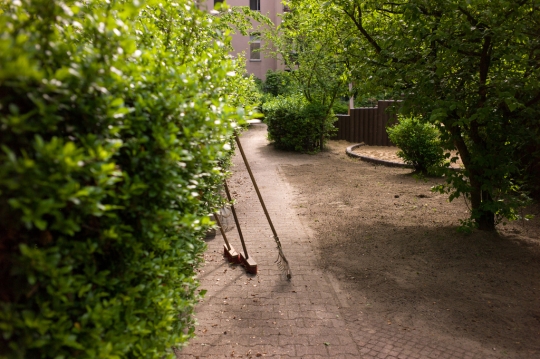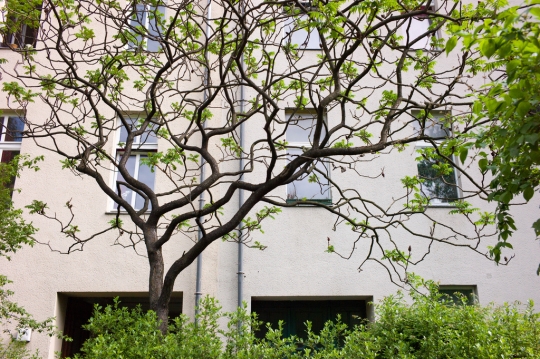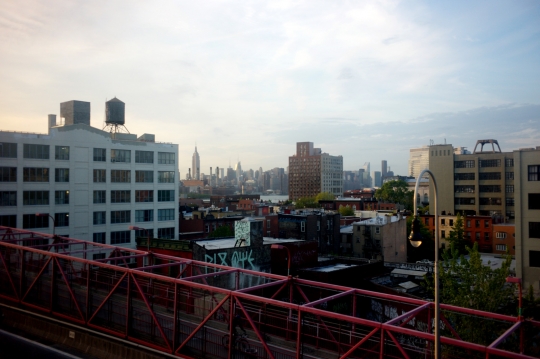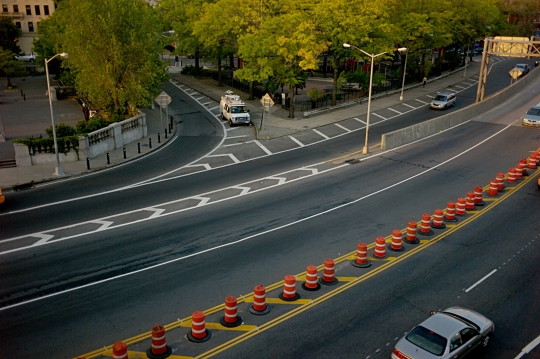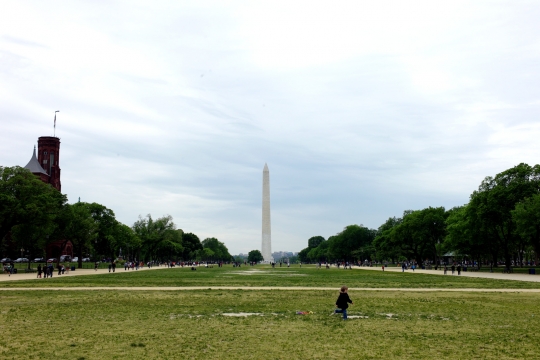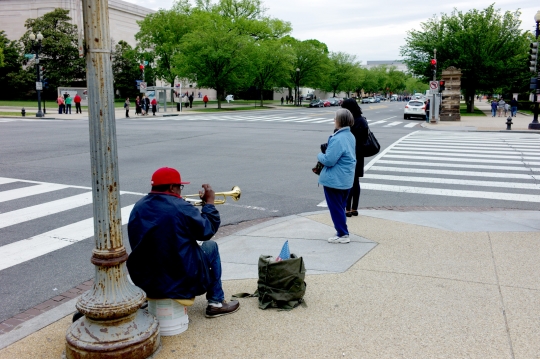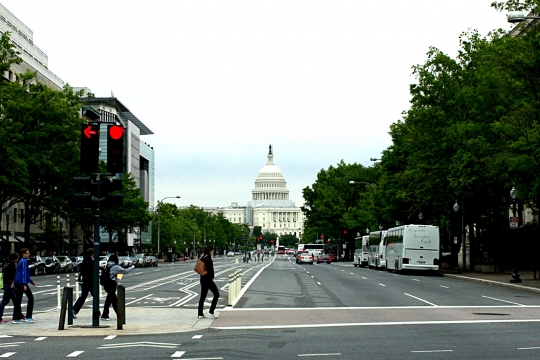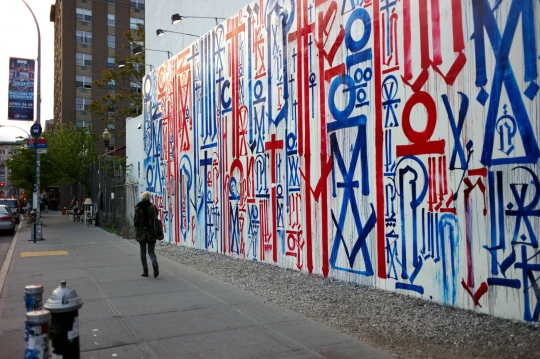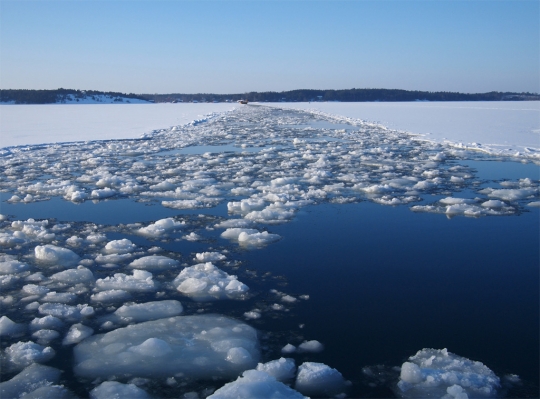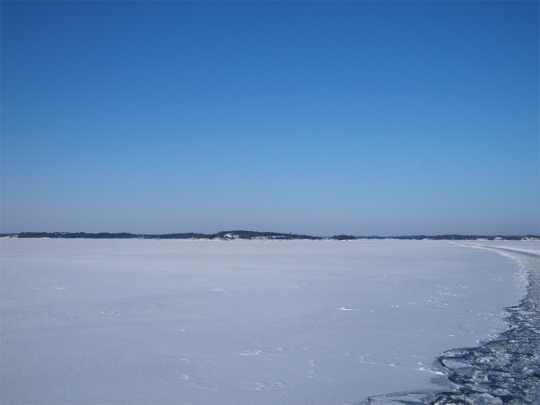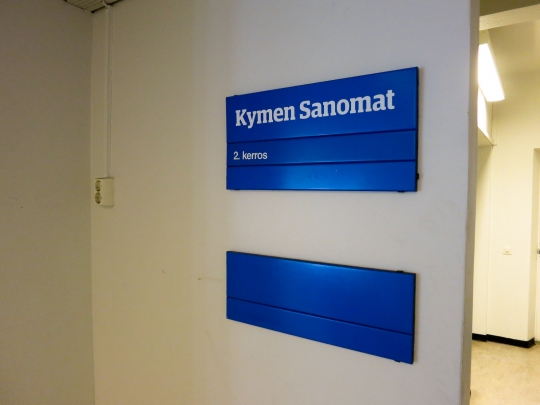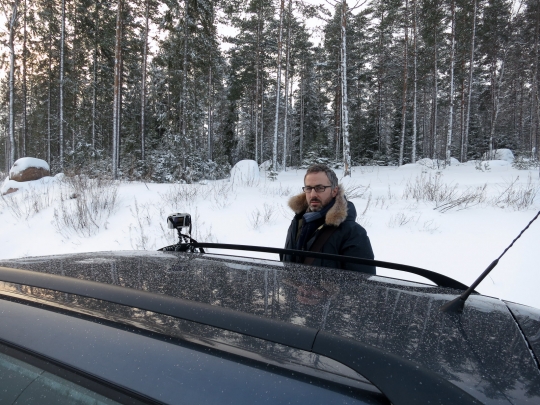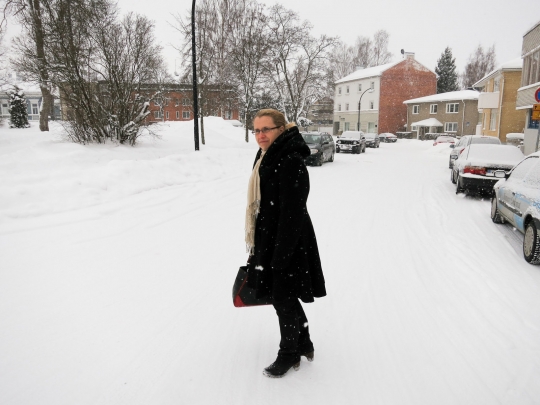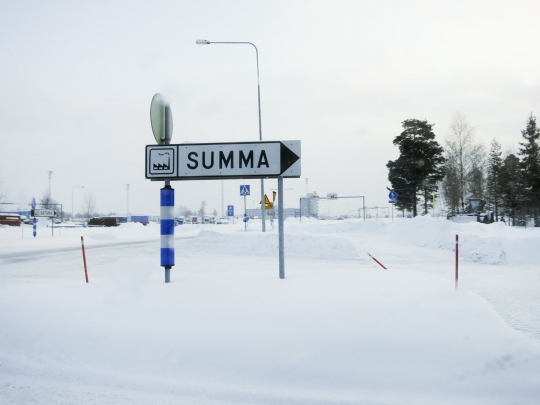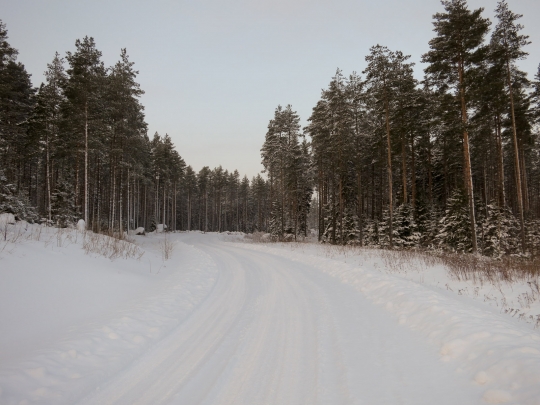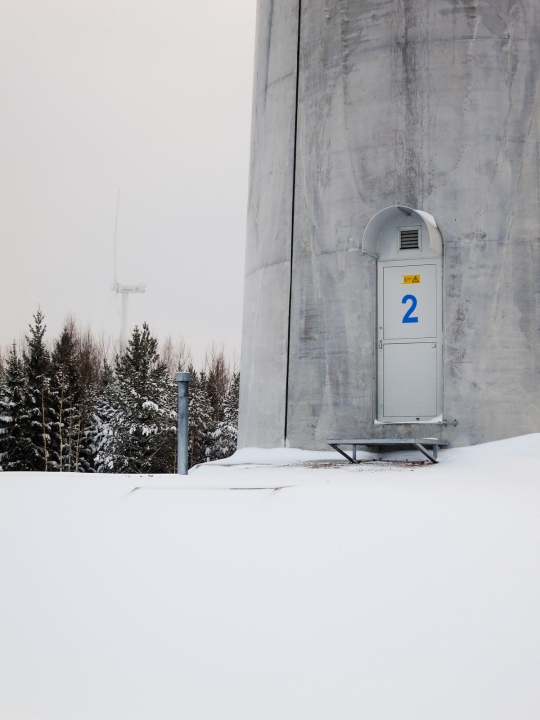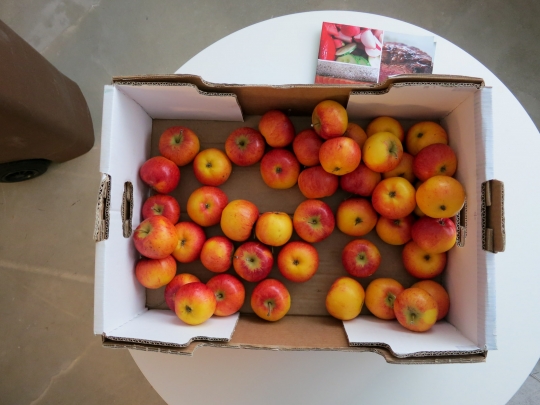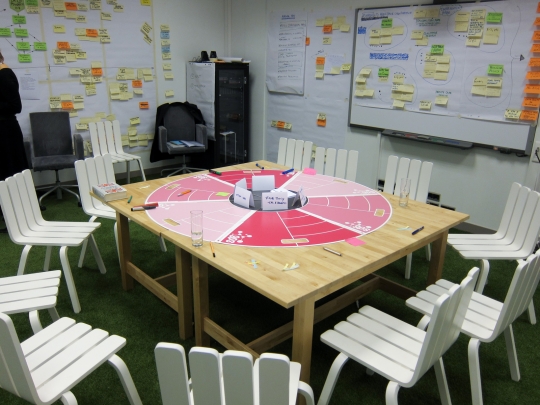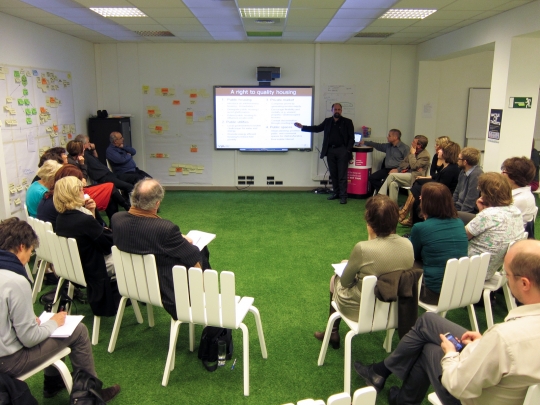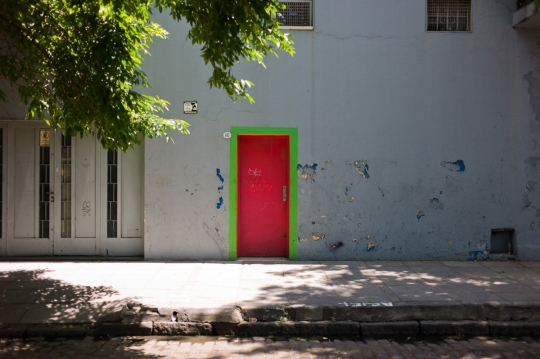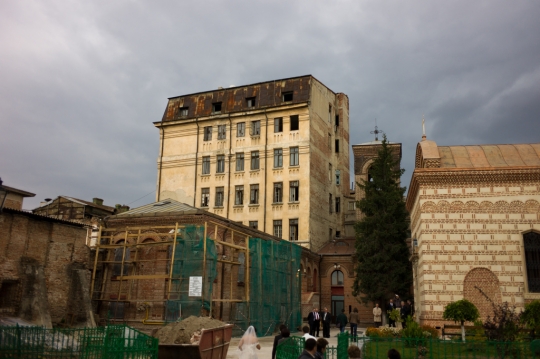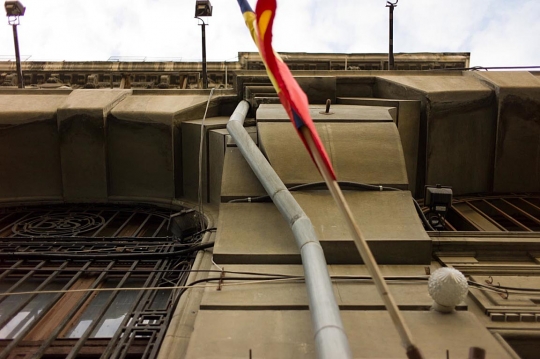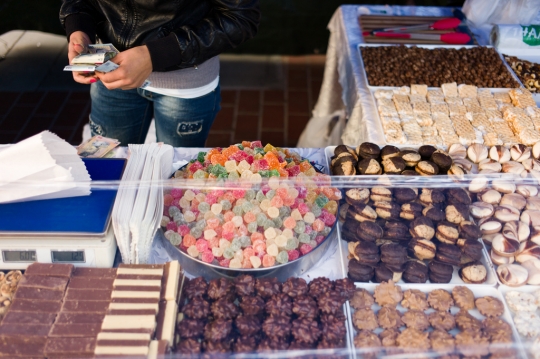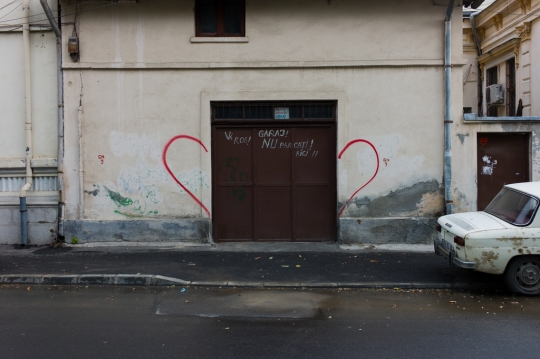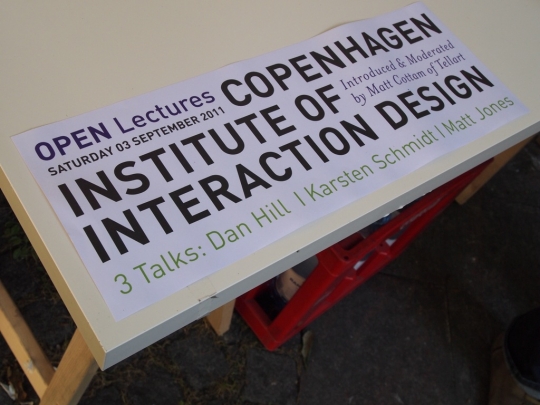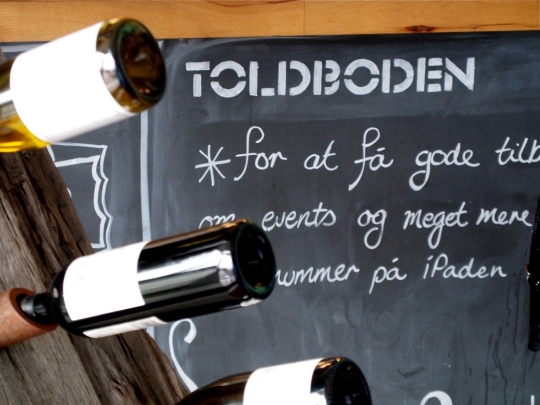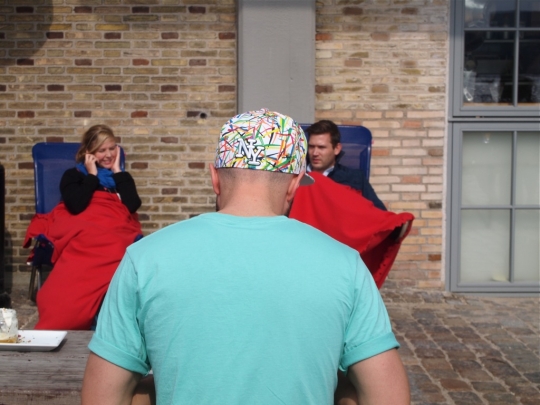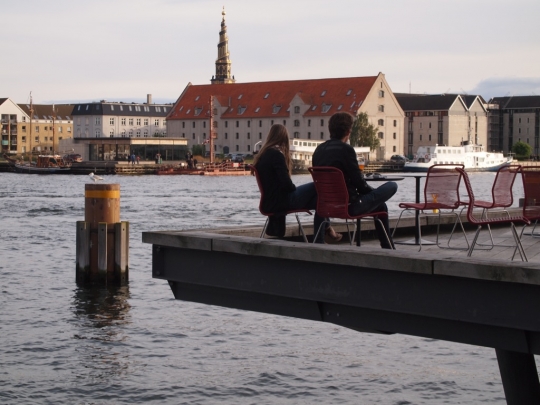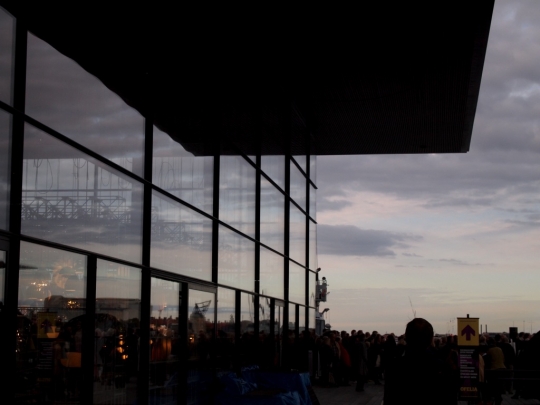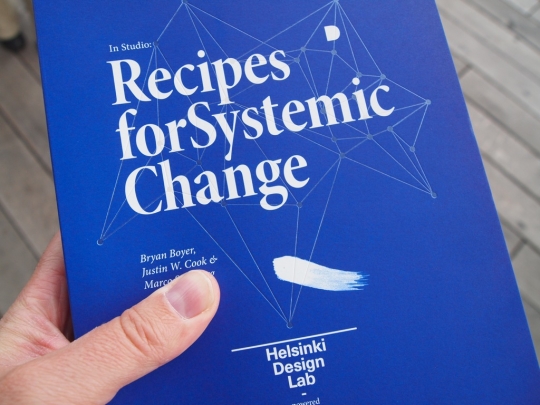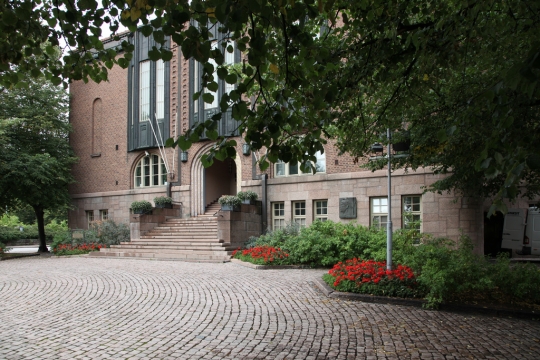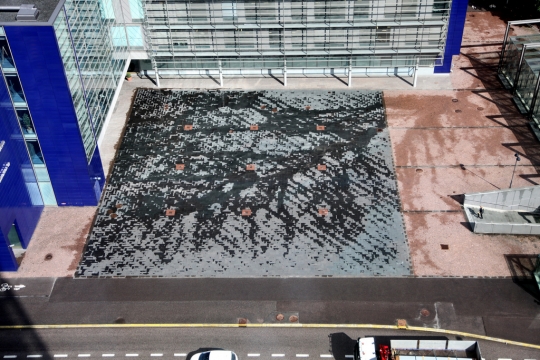All posts tagged Travels
With two and a half weeks of travel behind us, and just a few more days left on our HDL tour, the most common question Justin and I have been asked is, "are you ready to kill each other?" On the contrary, we're lucky to travel well together. This kind of trip would be impossible otherwise.
Today is London, fresh off the plane from Dubai. Later today we will give a talk to the MA Design Futures students at Goldsmiths University. I'm especially looking forward to this, as I hope we can spark a discussion about the boundaries of the applicability of design fiction. HDL has been an attempt to push beyond the fictive and that's one of the things we're most proud about.
Dubai was a quick stop, but we enjoyed a couple of morning sessions hosted by Noah Raford in the Prime Minister's Office. The conversation there was focused on improvement of services, the importance of synthesis (and thus design ability), and prototyping towards solutions. Many thanks to Noah for putting these discussions together. Although it's more recognized for deep spending on hard infrastructure, it was impressive to see the amount of attention being poured into the soft infrastructure in Dubai as well.
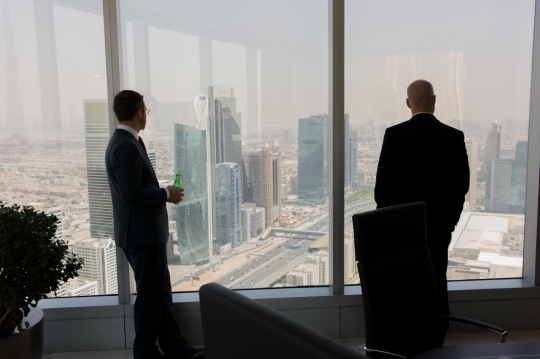
Noah and Justin survey Dubai from the PM's offices.
We also managed to zip down to Masdar City, which has long been part of our discussions around Low2No. We've seen Low2No as an alternative model to Masdar, one that's more appropriate for cities with legacies of built form, legislation, and financial regimes that cannot be swept aside. Seeing Masdar in person was enlightening. It's hard for such a hugely ambitious project to ever meet the hype, and there's certainly plenty of room for Masdar to grow into the reputation that it has created for itself. Still, what is happening there now may end up being more interesting than the original Foster master plan. As the planning adjusts to a smaller scope and a smaller budget, perhaps something more modest and more replicable will emerge?

Driverless Personal Rapid Transport unit at Masdar City.
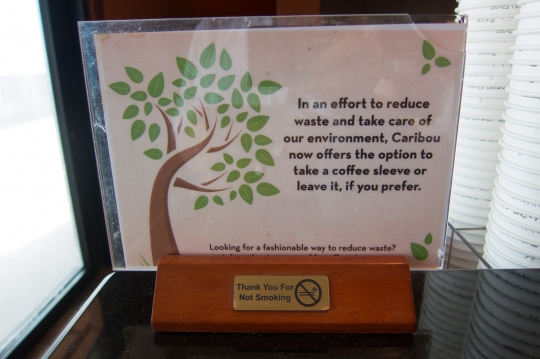
It makes sense to start with small steps, but maybe this is a bit too small?
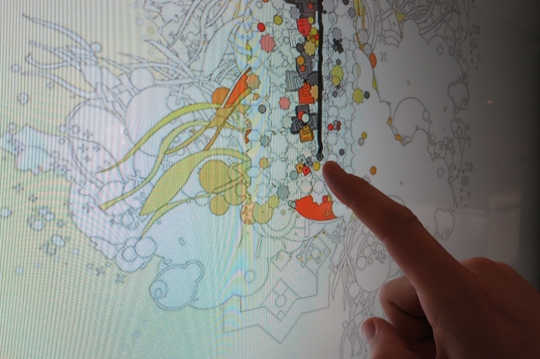
Generative art 'guestbook' at Masdar.
We arrived to Dubai via Hong Kong, where Justin and I stopped over to meet with Cees de Bont and Alvin Yip of Hong Kong Polytechnic University School of Design. They shared insights about the current state of design in China that have evolved since our last visit there in 2009, including a growing recognition of the role for designers in social innovation. In fact the Jockey Club, which makes a substantial purse off of track betting, has endowed the Design Institute for Social Innovation. They are just booting up now, but we will pay close attention. It was encouraging to hear about these plans, as it makes the HDL closure easier. HDL is fading out, but the ideas and the practices of strategic design certainly are not.
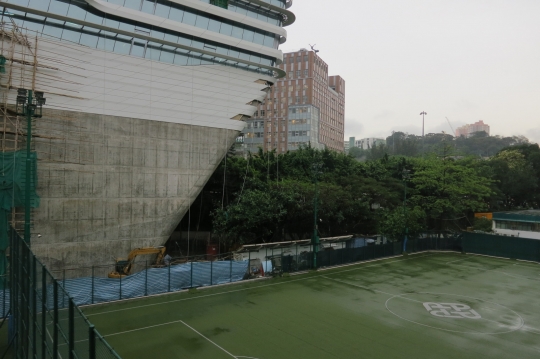
HKPU's new School of Design building is almost ready. And it's massive!
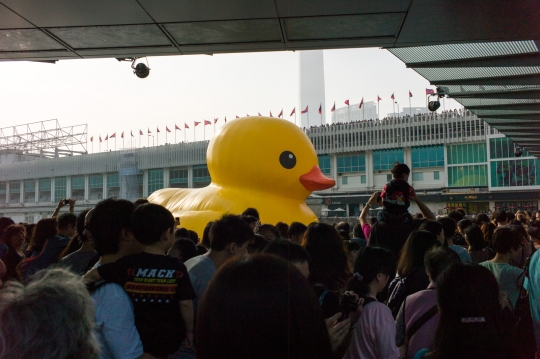
Hong Kong is currently in love with a giant rubber ducky.
Before Hong Kong it was Tokyo. Justin describes it thusly:
After an overnight from Sydney, we landed on beautiful spring morning in Tokyo. The privilege of arriving at Haneda Airport, close to the center, is that some of the scale, complexity and diverse functions of Tokyo are revealed. From the air, Japan’s industrial base, which is mostly absent in Hong Kong, seems robust, busily making small things very well.
We were invited by the University of Tokyo i.School to give a talk to students, staff and like-minded practitioners on strategic design and our projects at Tokyo Midtown Design Hub. Our gracious hosts Fumiko Ichikawa and Hiroshi Tamura had teed up an engaging facilitated workshop following the talk where the audience was asked to define “what is strategic design” (which we probably didn’t help them with during our talk!) and how could the approach be used to aid in tsunami recovery. With this group the idea of building a rigorous and active feedback loop between understanding the nature of the challenge systemically, and acting to make change via proposals and projects, clearly resonated.
Groups sharing their ideas about strategic design after our talk. Photo: Hiroshi TamuraSimilarly, during a workshop we ran at the i.school on the following day with Tokyo’s leading social innovators, the need to better connect thinking and doing was a popular topic. I was struck by how the tsunami had cracked open the opportunity for individuals to rethink and possibly begin to take on Japan’s structural challenges such as the widespread expectation lifelong employment with a single large employer or the lack of funding for smaller enterprises. The social entrepreneurs in the room seemed well equipped to compel Japan to remake itself as a more resilient society after the crisis.
On our last day in Tokyo, we had the pleasure of visiting ETIC, which has been working for two decades to ignite entrepreneurship among Japan’s youth. Their experience during that time suggests that Japan’s entrepreneurs are heading in the right direction as they are now more professional and impact oriented than ever.
We also visited the Nippon Foundation, which like Sitra, has a broad mandate to spur innovation nationally. Impact, measurement, outcomes, etc. are all ideas that are in the water in their organization as well.
Tokyo was a wonderful stop on our tour. On the one hand, their highly sophisticated culture has produced incredible gains for society, but on the other the dominate cultures of decision making seem opaque and unbendable to many. But events like the tsunami are providing a way in for social innovators like the ones we met at the i.school.
Before that? Australia.
While Justin and I have been traveling, Marco was also on the road with a stop in Amsterdam at a Labs summit and a stop in London at the Institute for Government. Written up here and tweeted here.

Best part of a long flight is that you can write emails without receiving any. It's pure inbox upside.
Amidst all of this, Legible Practises is going to press. No pictures yet of the printing process, but here's a glimpse of what it will look like:

Editing the final draft of the book.
Toronto, Melbourne, Sydney. That was week 217. In other words, a blur.
Some images:
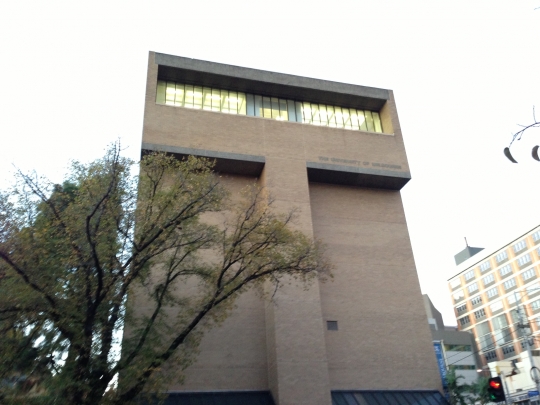
Friend-of-HDL Rory Hyde organized a talk at the University of Melbourne Faculty of Architecture that ended with a great discussion about the future of architectural education + strategic design.

The Difference, a unit of PWC, hosted us for a morning discussion in Sydney. Thanks to Martin Stewart-Weeks of Cisco for the introduction.
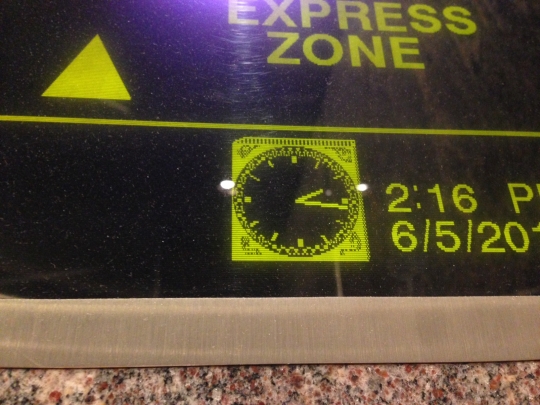
Government offices in Sydney, where we gave a lunchtime talk with a group of senior civil servants, have an a very modern building with a thoroughly antiquarian electronic clock. Nice touch.
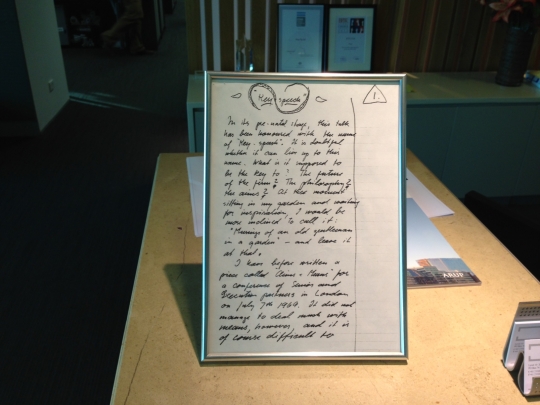
And we ended a busy day in Sydney with a stop at Arup, who keeps a copy of the Key Speech by the front desk.
Next stop: Tokyo.
The last two weeks have been consumed by the task of finalizing our latest and last HDL publication. It's a book called Legible Practises that contains six stories about the craft of stewardship. Huh? Stewardship, as we define it, is the art of getting things done when many minds are involved in the conceptualization and many hands in the implementation. The six stories we look at are each examples of changing the tires of a car while driving. In other words, changing systems while they're still humming (or clunking and sputtering) along. More on this shortly, when it's actually out the door. Right now a more pressing concern weighs on our minds as Justin and I camp out at a cafe in Toronto: the weather.
Toronto is warmer than expected. Naturally, the day we spend enjoying the city and meeting with groups like The Moment, MaRS Solutions Lab, Ontario College of Art and Design Strategic Innovation Lab, and MASS LBP is the day that's rainy and gray. Today we are frantically finishing work before hopping on the next flight and it's gorgeous. Nevertheless, this has been another inspiring visit to Toronto thanks to the forethought and preparation of Social Innovation Generation. Thanks to Tim and Satsuko!
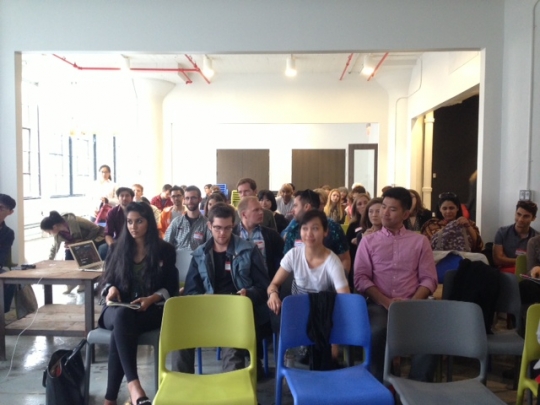
Hello, Centre for Social Innovation!

A morning discussion about strategic design, ethnography, politics, and more hosted by SIG and The Moment
This is the second stop on our HDL Moi Moi tour. As part of closing down the initiative, we're visiting people in New York, Toronto, Melbourne, Sydney, Tokyo, Hong Kong, Dubai, London, and Dublin to share what we've learned. On Sunday Justin and I met in NYC to give a talk at the Centre for Social Innovation, a newly opened coworking facility catering to social enterprises and others with similar interests. It was an honor to be part of the first event that they've ever hosted in the lovely new space.
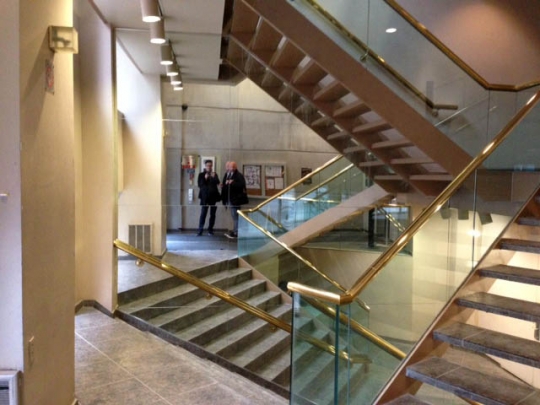
Welcome to the matrix... of stairs.
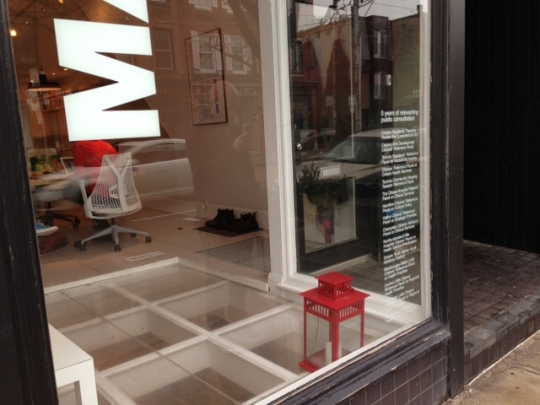
MASS LBP's offices have a CV of sorts on the window. Nice.
In a couple hours Justin and I will load ourselves onto a plane bound for Melbourne. There we have a public talk lined up at the University of Melbourne Faculty of Architecture (see you there?) as well as other meetings around town.
As we move from venue to venue I feel guilty because we keep mentioning the publication that we are about to complete. In fact, if I don't commit all of the final edits before we're airborne, it's going to be too late. So the pressure's on. Justin's working on edits now—very seriously, as you can see.
T-minus 40 days.
This week we hit an important milestone in text. Monday was a long day but we managed to deliver a 100% manuscript for the next (and final) HDL book. We're still figuring out exactly what to call it, but this one is about how people use projects to develop new solutions and new cultures of decision-making simultaneously.
After handing the draft off to the graphic designers I felt an almost immediate sense that we had left out a few things. We'll revisit that after the weekend. In the meantime, things like this are flowing into my inbox:
That's a draft of the layouts (zoomed way, way, way in). I've come to appreciate the shapes of the letters in the typeface Minion, which we always use. Quite a handsome gee, no?
As for unexpected details, here's another one that comes courtesy of the new Finnish passport design:
A pair of upcoming events deserve a mention here. First, Marco will be at the Institute for Government in London on May 10 to discuss design-led policy. More details here. Justin and I will do a similar session co-hosted by the Centre for Social Innovation in New York and the Parsons DESIS Lab. That's April 28th and you can register here.
Hope to see you at one of those events.
Last week Justin and Marco were in Boston to assist MIT's Collaborative Initiatives with a pair of studios. Things up there went well and it ended before the city suffered an attack and subsequent chaos. Luckily everyone is safe and accounted for, but our thoughts are with those who were less fortunate.
Video crews everywhere. That's the first impression of my time in Bangkok, where Marco and I spent a week observing and coaching Future Innovative Thailand (FIT) as they kicked off their initiative by running three parallel studios. Comes with the territory when some of the country's most recognized political leaders are sitting in on the studios. No pressure.
Our host, Nuttaphong, adapted the studio model to his own context and purposes and we got to see it all play out. Given the language, it was not always easy to follow along but we still gleaned a lot from being there. Thanks to our hosts for their hospitality, enthusiasm, and engagement during an impressive (and exhausting!) week. Congratulations to Nuttaphong and the team on the launch of their initiative.
Perhaps the biggest difference between these studios and the ones that we have done in the past was the presence of 'owners'—mayors, MPs, and other decision makers—in the room for the length of the week, as opposed to just at the end for the review. We never attempted to staff the studio in that way because, frankly, we didn't think it was possible to get a politician to clear that much time in their perpetually full schedule. Thailand, on the other hand, proved that it can be done!
For me one of the most useful realizations was also something that I probably should have recognized before. When we wrote In Studio we left a coy blank spot in the middle. Perhaps because it's labeled a 'model' people often assume that it's a model of facilitation. Rather, the studio model is about everything but the tactics of group facilitation. In that sense it's dogma-free on purpose. If U Theory is your thing, OK. If you prefer another means of facilitation, fine. You can use whatever process you are comfortable with so long as you move from learning and insights, to architecture of problem, to architecture of solutions, and you end with a review.
Yes, Bangkok was good in that it showed us how the studio plays out when the makeup is a bit different. When the parts are reconfigured. As for content, the focus on good governance (including anti-corruption) was an issue that was constantly in the air. As a topic that did not come up very often in Finland, I enjoyed talking through these issues with the studio teams. Scale was on the top of everyone's mind too, as it should be. How can we scale up good ideas quickly? Finally, it also showed us a few areas where we should revise the How-Tos in the book. If we manage to get a Print on Demand version done before June, that is!
Books, books, books. I spend most of my time writing these days, with Marco and Justin doing the same. We are about two weeks out from the 100% draft deadline for a title we're tentatively calling Stewardship: Leading into Practice. This will be the final HDL publication.
Between bouts of writing Marco has been on the horn with groups in the UK, US, and Switzerland as well as tending to meetings in Helsinki. I enjoyed a morning meetup with Eli Malinsky to learn more about the Centre for Social Innovation's expansion to NYC and also spent an afternoon with Eduardo Staszowski's students at the Parsons/New School School of Design Strategies. These were violations of a (not so) strict moratorium on all appointments until after the book is drafted, but they were worthy transgressions.
The Brickstarter book, by the way, is still forthcoming. It is coming along and we're hoping to have it completed before the end of the month but no promises yet.
The Design Exchange blog is still hopping with activity from Hella and Sirpa.
So then, back to the writing. And to the event prep. And the trip prep. And the coffee, actually.
T-Minus 66 days.
Signing out of my hotel in London today I made the mistake of putting the date down as September. Not yet, Bryan. Not yet. But this calendar mishap does reveal my state of mind. As our projects become more concrete new details emerge. New things to be taken care of, things to be considered, and somethings things to be deliberately ignored. But anyways, a lot to keep track of.

Team calendars are an indication of what our life is like right now
Maija and Kalle have been buzzing around making movies. Maija and another Kalle were shooting a pitch so that we have some plausible content in place when we release the Brickstarter mockups as clickable pages (soon!). Kalle spent an afternoon with Antto Melasniemi in Tukkutori filming the call for applicants video for Open Kitchen. They're both now heads-down editing.
(Aside: we've been watching lots of pitch videos on Kickstarter and elsewhere to learn what makes them effective. This is one of the gems we came across:Informative, unique, and hits exactly the right tone for their audience, one suspects)
Open Kitchen is seeing a smörgåsbord of activity, suitably. We're (still) wrapping up contracts, commissioning work on the brand and logo, booking ad space for the fall, and finalizing the application process so we can open that at the start of September. Elina and Antto have a good feel for most of these, and collaborating with them on the project continues to be a joy.
Although we like to do things in the open, and this project even has "open" in the name, it's kind of nice that there is not much of a public presence for the project just yet. Beyond the book we have not released many details which means we're not having to answer lots of questions. In September we will publish the call and this will change, but we'll be ready.
Brickstarter, on the other hand, has been getting tons of attention. This is all immensely positive, of course, and we've been happy to see interest from across Europe, North America, and elsewhere. Marco, Justin, Dan, and I spent an afternoon out of the office sketching scenarios A through D for Brickstarter (more like A through X).
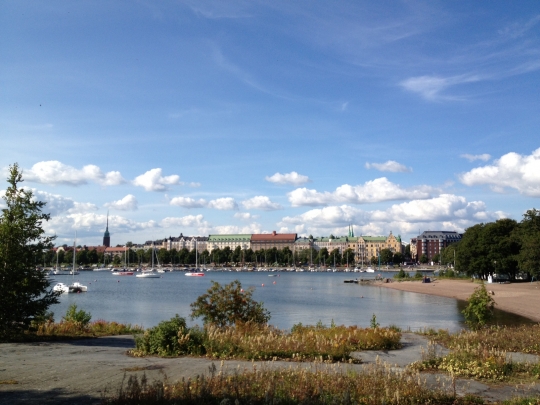
Helsinki doing what it does in summer
As we decide next steps we're balancing scenarios based on our understanding of the needs of citizens and municipal governments, Sitra's abilities, and what sort of interest we can attract from partners and collaborators. Do we build Brickstarter as a running service? If so, who will operate it long term? Do we build half of it and ensure a good handoff to another team? Maybe, but who will that team be? These questions have been part of our dialog since the start but we're approaching a decision point, thus scenarios A through D.
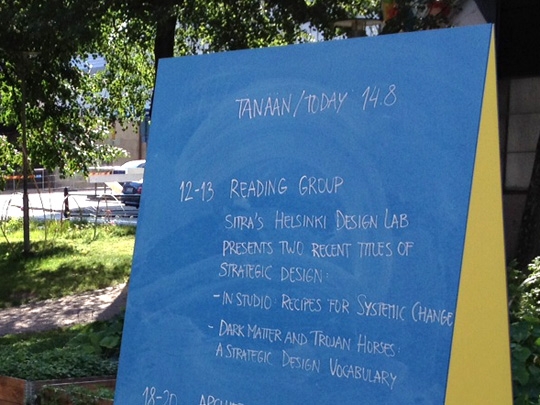
In the middle of the week Dan and I did a book reading at the Paviljonki. Sure is going to be sad to see it close up for good in September.
And then there was London. Marco and I came here under the auspices of HDL 2012 to learn from Nesta and IDEO about how they make innovation happen. Our focus this year is on stewardship, or the craft of innovation. During the session Philip Colligan pointed us to W. Brian Arthur who is very compelling on the subject of "Deep Craft" (conveniently, coincidentally, transcribed by Matt Jones):
Deep craft is more than knowledge. It is a set of knowings. Knowing what is likely to work and what not to work. Knowing what methods to use, what principles are likely to succeed, what parameter values to use in a given technique. Knowing whom to talk to down the corridor to get things working, how to fix things that go wrong, what to ignore, what theories to look to. This sort of craft-knowing takes science for granted and mere knowledge for granted. And it derives collectively from a shared culture of beliefs, an unspoken culture of common experience.
I like this a lot because it encapsulates in a more elegant way something that I've been calling cultures of decision making. As we study the craft of public sector innovation—this particular culture of decision making that's emerging—we're approaching it as anthropologists might. In conducting these sessions with high-performing innovators we're attempting to understand the rituals, trinkets, roles, and spaces that populate their work. And often, I should note, our own.
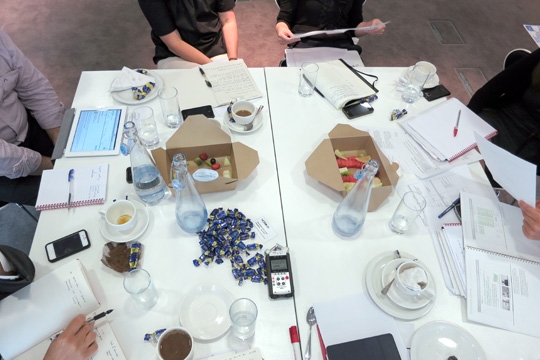
The 18 pages of dense notes in my sketchbook are testament to the caliber of conversation. Thanks to Philip Colligan, Katy Bentham, and Melani Oliver of Nesta; John Craig of Innovation Unit; and Hailey Brewer and Suzy Stone from IDEO. Many thanks also to Nesta for hosting the sessions, including a top notch picnic!
And another two-for-one, which illustrates a) that we're busy, which is good, and b) that for many of us, holidays are approaching rapidly, like a broad sweep of clear blue sky appearing on the horizon, which is also good.
Summer is here, by the way.
After giving a talk at the European Centre for Living Technology in Venice, Bryan then took the opportunity of being in Italy for a quick well-earned break featuring la dolce vita, I believe. ECLT seem to be doing some really interesting work regarding "economically viable"/sustainable mountain communities in Italy—definitely worth a look, according to Bryan. Meanwhile, Marco and Justin have been knee-deep in Low2No as usual, partly working on this aspect, amongst other things. And Maija Oksanen has joined us too, as a summer intern. With Kalle, we now have a fuller team, and thankfully some more native Finnish speakers. That is already helping us hugely, though Maija and Kalle bring a lot more than just their exemplary language skills.
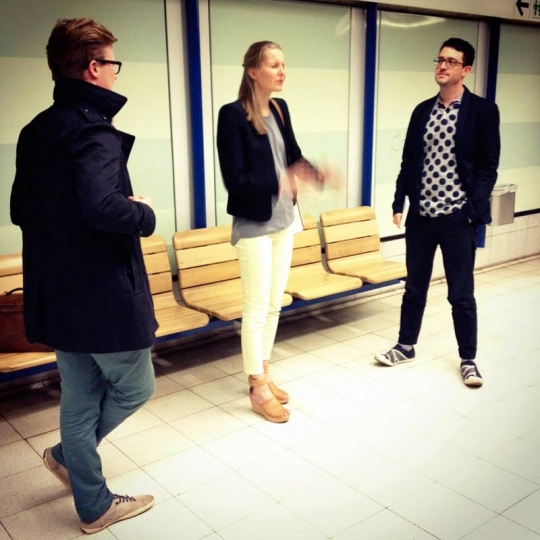
Part of team SDU, now featuring interns.
In the last few weeks I've been to Milan, London, and Amsterdam. Oh and I had to unfortunately cancel a trip to Moscow, which is probably just as well given that diary. (But still, Russian visa timelines! Why, in this day and age, is it still so difficult for non-Russians to do business in Russia? Legacy dark matter.) I'm sorry not to have made it to Moscow, but these trips are always a whirl of talks, lectures, meetings, logistics, and brief, stolen moments of peace and reflection amidst the bustle of these fine, old cities.
The Russia trip was to be a talk at Strelka Institute, which I'm hoping to be able to do later in the (northern) summer. Strelka are one of the more interesting design schools in Europe at the moment. They also happen to have recently released the essay I wrote about six months ago (Bryan referred to it last time): "Trojan Horses & Dark Matter: A Strategic Design Vocabulary."
This is part of the new Strelka Press series, curated by Justin McGuirk, which features other essays by the likes of Owen Hatherley, Sam Jacob, Keller Easterling, Julia Lovell and Alexandra Lange, as well as Justin himself. It's an interesting approach, exploring the e-book format for essay-length writing, and priced at a level that makes it accessible to a wide audience.
My essay covers a lot of the terms, and background conversations and thinking, that underpin some of the things we've been writing about — and more importantly, trying to get done. It's intended to be a kind of primer, or "playbook", which presents the idea of a vocabulary - as a way of starting and developing conversations in this new area. With that in mind, please do let me/us know what you think.
The other trips were to the Politecnico di Milano's architecture summer school for a talk, but with a short hop over to Frog Design Milano to discuss strategic design with them. Also, Joseph Grima of Domus magazine, to talk Istanbul Design Biennale amongst other things.
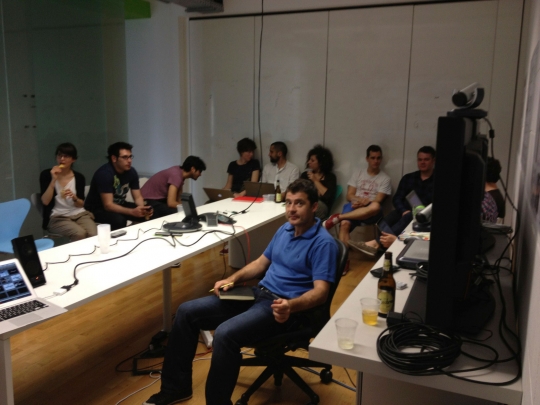
Milano Frogs, about to get a talking to.
London was more of a meeting-based trip, featuring a catch-up with the indefatigable Tom Loosemore, an old colleague from BBC days, who is now doing great things at Government Digital Services, which is part of the UK Cabinet Office (we mentioned their design principles previously). They, too, are going well beyond "this is just a website" work. Also, a useful catch-up with Philip Colligan and Laura Bunt at our sister organisation NESTA RE Helsinki Design Lab 2012, and a good chat with Laura afterwards. Plus a meeting with Gill Ereaut of Linguistic Landscapes, who do fascinating work working with organisations (often public sector) to understand and unpick their habitual behaviours through the prism of their everyday working language.
I also met up with Ricky Burdett of the London School of Economics 'Cities' programme. Burdett is a hugely influential figure in the field of urbanism and cities generally, so it was a pleasure and privilege to meet him. It looks like we'll be working together on a new LSE Cities conference in London at the end of the year, where I'll be talking Brickstarter and beyond, hopefully, in the context of "smart" and "not so smart" cities.
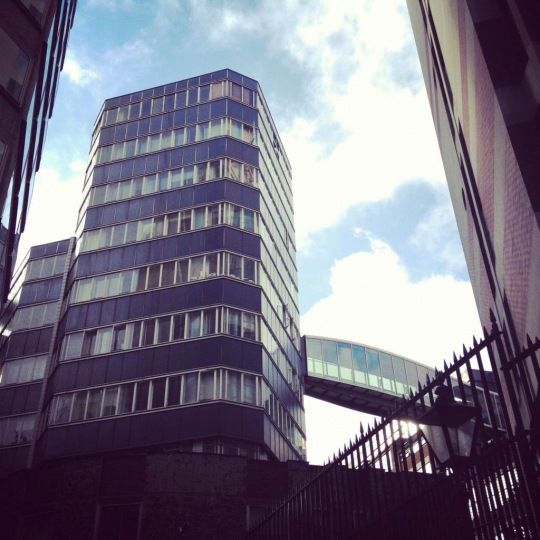
Visiting the London School of Economics
Ricky and I are also on the advisory board - with Sir Peter Hall and Saskia Sassen - for a new Young Foundation project called "The Social Life of Cities", in association with Cisco. We had a first meeting of that last week, for which I had to endure a visit to a terrible business park in Espoo. The irony of being there - virtually alone, surrounded by concrete flyovers and lazy, ugly, damaging buildings - and yet talking about "the social life of cities" was not lost on me. Perhaps it's useful research just to be there! Still, the project could be very valuable and we got off to a good start with an engaging discussion.
Back in London, I spent a long but enjoyable day at BERG London, judging the Core77 Interaction Design awards, with Bonnier's Sara Öhrvall, BBC's Julia Whitney and BERG principals Matt Jones, Jack Schulze and Matt Webb. Results out in July.

Sara Öhrvall & Matt Jones, breaking for lunch.
While at BERG's studio, Sara and I were addressed by a certain Little Printer.
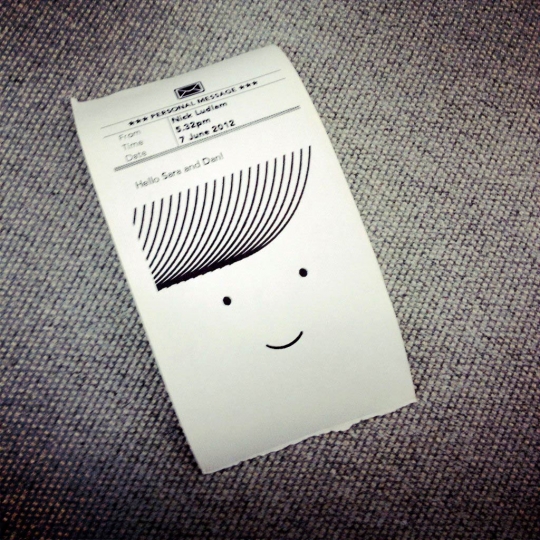
Little Printer's little print-out.
Finally, Amsterdam was a speech at the start of the 'kennisdag' (knowledge day) for the 500 staff of the City of Amsterdam's "spatial sector" (architects, planners, engineers, real estate etc.) The City had lined up a very impressive day of workshops for their staff, all held at the wonderful Felix Meritus building on beautiful Keizergracht. It was great to see a city government actively working at shared thinking and discussion, particularly given the challenges all city governments are beginning to face (and so the Brickstarter work was again germane to their thinking.)

City of Amsterdam folk, arriving for the "kennisdag".
For Brickstarter, we brought energy policy expert Robert Brückmann (of Eclarion) over from Berlin, to talk to Sitra and a few other representatives from relevant sectors in Finland. We had a great discussion about Germany's energiewunder - also discussed previously here. Again, we are hugely inspirted by what Germany have done here. This follows previous Brickstarter talks from Marcus Westbury and Rodrigo Araya, and more to follow after the summer break.
We'll have some major updates on Brickstarter.org shortly. I've been handling the stewarding of a clickable prototype "conversation starter", and that will soon be up. Maija has been plugging away researching 'adjacent' services. Expect to see lots of little 'fact card'-like blog posts up there soon. Kalle has also been developing some similar 'fact cards' around food scenes in cities - focusing on the legislative environment (dark matter), rather than cuisine as such - for use in our food-related projects. (Just after that, Kalle, who is a barista, headed off to Vienna for the World Cup Tasters Championships, where he placed ninth. Amazing. Well done Kalle!)
That food work is progressing rapidly now, in partnership with Antto Melasniemi & Elina Forss, as well as the City of Helsinki (Ville Relander) and will soon be appearing on its own project blog.
We'll also give you an update regarding our Design Exchange project shortly, which has been progressing nicely in Lahti, as well as our renovations and reworkings of the Sitra tower.
Meanwhile, it seems that every other week we're discussing what we do with representatives of various pioneering Canadian social innovation organisations and foundations - they seem like they are on the brink of becoming the most fertile place for that kind of work, interestingly. A couple of weeks ago, Bryan had a chat with Lisa Tjorman, of the aforementioned excellent Labs report, and last week, we were happy to discuss our work with Allyson Hewitt, also of Social Innovation Generation in Toronto. Watch that space, is all I'll say for now, but they're heading somewhere very interesting over there …
And finally, as they say at the end of British news broadcasts, we're spending a lot of time on internal culture, and particularly the notion of "ideas", "projects" and the relationship between those things. Which, of course, is not always self-evident, or simple.
With that in mind, Bryan forwarded on this post from Adam Mathes, formerly a product manager at Google, about his practice:
My conclusion after a few years is that the best product management is about providing the vision of what to build and why and then creating the context where great things can be made. That context usually involves the right people, space, time, and patience...
But for truly innovative and creative products, project management may not matter as much. If you are making something new and creative and different, it’s hard to know exactly how to make it. You may be building the tools and technology you need because they don’t exist yet. And may be impossible to properly estimate how long it will all take.
More on Adam's blog.
And finally and finally, we spied our "In Studio" book on John Thackara's bookshelf in the lovely "virtual tour" of his workspace recently posted. It's apparently creeping its way towards him, day by day. As it should you.
OK, latenote for last week. The highlight was perhaps a great conversation with various representatives of Canada's Social Innovation Generation partnership (SIG), who were in the neighbourhood (well, Stockholm) and were kind enough to swing by Helsinki for a chat.
They're doing really interesting work scoping out what they call the "change lab" model, preparing the ground in Canada. We were visited by Cheryl Rose (Associate Director of Waterloo Institute for Social Resilence and Director, Program Development for SIG), Tim Brodhead, (JW McConnel Family Foundation, SIG, MaRS Discovery District), and Sam Laban (Education Program Manager, SIG). We have lots of visitors to Sitra and HDL, and always enjoy and learn from the discussions and connections, but rarely has a group been so well-prepared and asked such perceptive and insightful questions.
I'm intrigued by Canada, having never been but idly marking it as a kind of mirror/inverse of Australia (vast, sparsely-populated, resource-rich, echoes of empire, Anglo in bits, fine cities, incredible landscape, great cities etc. etc.—and it is of course completely different, I'm sure). And we've been delighted to see the thinking emerging there—as noted previously, their summary of lab-like iniatives ("Labs: Designing the Future") is definitely worth a read—and so we're really pleased to open up this diaglogue. It looks like I'll be visiting Canada in return, this November, which I'll update you about nearer the time. Thanks to Cheryl, Tim and Sam for popping in.
Bryan had to rush off after lunch with the Canadians, heading over to Derry. After noting the preponderance of wind turbines in the Irish countryside ...
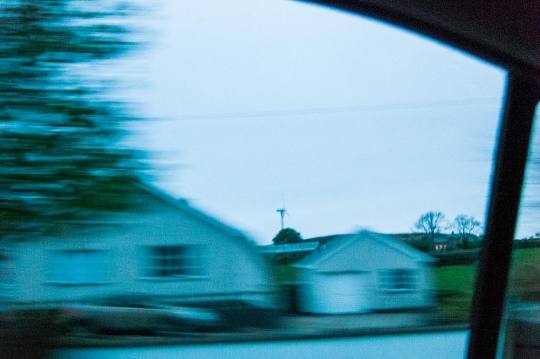
Turbines in the Irish countryside.
... he took part in the Academy of Urbanism's Annual Congress on The Resilient City, and he reports that It Was Good. The level of conversation was excellent, and the very particular context of Northern Ireland perhaps lent the affair a seriousness and motivation that is often lacking in similar events.
Bryan pointed me at one project—a comprehensive regeneration plan for Derry-Londonderry [read the full PDF or summary PDF]. It looks to have a good strategic edge, which foregrounds what I'd call the real drivers of cities (economy, culture, community) but views them holistically alongside some necessary strategic interventions (improving health, approaching sustainability) and then draws in secondary or tertiary matters like infrastruture, buildings and so on. Have a squint at the diagrams on page 7 and 8 of the shorter PDF:
Meanwhile, lots of work on Brickstarter. I've started designing the first 'alpha' version of the web service, which we'll share some details of shortly. As ever, we're using the website as a kind of token in order to open up wider, systemic issues—but you have to build the thing in order to flush them out. So it's been very interesting, and very rewarding, to finally be discussing the details of the various interactions we want to explore i.e. crowdfunding versus voting? What do we mean by voting? How do we balance a democratic model alongside crowdfunding? How explicit do we make the council? How to do a slow reveal on the dark matter so as to enable a low barrier to entry yet subtly unpack it over time such that the project proposals are robust enough to be taken seriously? All this and more emerging over at brickstarter.org shortly.
I love getting to this stage of a project, as everything starts to come together. With a project straddling governance and democratic models, crowdfunding and emergent community actions, sustainable development across use of shared space, shared resources, energy and so on, it actually helps crystallise the project considerably. Then our job is to draw out the shifts in this otherwise imperceptible dark matter implied by such a product or service, such that we might enable their productive reshaping. (I also happen to love spending hours in Photoshop and Illustrator, frankly. For the strategic designer, the challenge is always to balance the lure of exercising your craft skills with the requirements of the strategic, systemic view. But one enables a better view of the other, and vice versa.)
We finally got our first Finnish post up there (thanks to Kali!) and there's a good overview of crowdfunding platforms by Bryan, too.
Kalle's been doing some nice background research on 'food profiles' for other cities, for Helsinki Street Eats. We'll have a set of cards emerging for different cities shortly, to enable productive comparison with Sydney, looking at the regulations, governance culture, scene on the streets, and so on. We're also now in discussions about how and what we can fund in this area—more on that shortly.
I've also been helping out with the organisation's imminent reorganisation in our building. With Bryan, we've been leading a renovation of one of the floors, but again, really we're looking at the organisation's culture, the way we work, and interract, and so on. (Again, the balance of crafting a specific output with the wider strategic, cultural view.) We have a 'bootcamp' with the management team next week to draw up the first sketch of a new organisation.
And two good lunches. First, Bryan and I with Artek's Ville Kokkonen (design director) and Anna Vartiainen (marketing director). Artek are one of the genuinely great Finnish brands and operations, founded by Aino and Alvar Aalto (a bit of background). Their 2nd Cycle concept is a particular favourite in the Sitra office, indicating a form of "resilence" in which the firm buys back its own products and re-sells them, a simple concept that gracefully indicates the ongoing value of good design and production, as opposed to "throwawayism".
Secondly, I had a good catch-up with Tommi Laitio of the powerhouse that is Demos Helsinki, covering many topics: Baana, Brickstarter and beyond. In particular, we discussed the forthcoming event that Demos are curating at the World Design Capital pavilion (or "paviljonki" as it's known here), where we've invited Marcus Westbury of Renew Newcastle/Renew Australia fame to speak, on an afternoon/early evening session about urban development dubbed "City 2.0" (read a previous conversation with Marcus here.) More info on Facebook, and if you're in town, do come on down. (By the way, a tilt-shift time-lapse of the WDC Pavilion going up. It's designed at Aalto University's Wood Program.)
Oh, and it's the Helsinki-originated increasingly global sensation that is Ravntolapäivä (Restaurant Day) this weekend (May 19th) (for background, read our "Helsinki Street Eats" book-let). Make sure you visit Kalle's coffee stall—"Gaffebaari"—in particular!
Finally, some quick linkage: Brickstarter was mentioned in another scene-surveying post about crowdfunding urban development, this time at ArchDaily; John Thackara asks whether we need an Arne Jacobsen of urban food systems, and "Making Planning Popular: A Manifesto" (related to "Sub-Plan".)
And a little more controversially, an interesting take-down of the open data and transparency movements and a reaction to the perceived over-spending on buildings and infrastructure in Valencia, Spain, homing in on Santiaga Calatrava. Sadly, there's little public controvery here about the proposed (or is it?) road tunnel under central Helsinki, which is apparently still sitting on the city's plans somewhere, and has been for years—or is at least alive in the minds of the current generation of city planners. Not only is this a ridiculously outdated idea ("sell by" circa 1970) it is apparently preventing or otherwise hindering other projects from happening. The local media is asleep at the wheel on such matters, as far as we can tell. More here if/when we get it.
Oh, and I forgot to report: Vappu, a couple of weeks back, was a blast. Very special indeed, and no way near as bacchanalian as I had been led to believe (caveat: I went to bed early.)
What we learned in #163 is that Berlin has jumped straight to summer while Helsinki is taking its time with spring. A quick update to keep up the tempo, but not as much depth as usual because Dan and I are hosting a visit from the MaRS / WISIR / SIG in about 3 minutes! Edit: I did not make it, so this is being completed after a very good conversation with the Canadians, but you'll have to wait till next week to hear about that one.
In Week 163 Dan, Kali, and I were in Berlin to do some research for Brickstarter looking into the ways that people are working on community engagement and energy infrastructure. Separate things but deeply related, as we suspected, and as we found.
Perhaps surprisingly, amongst the many threads that tied these two together was the role of narrative. As Anna Poblocka of Eclareon put it, Germany's ability to create a narrative around the move towards renewable energy is an important part of their ability to aggressively pursue this transformation. The next day Dieter Genske expanded this notion by introducing us to the linguistics of this particular narrative which is called energiewende in German.
Use of the word "wende" connects the renewables effort with the importance and scale of another significant act, the reunification of Germany after the wall came down. This is an example of the way that we talk about a specific change helps prime conversation to be positive or negative, empowering or overwhelming, one that preferences the status quo as immutable or sees it as merely a current-state. And while linguistics is a soft topic in comparison to the significant rigidity of (current) energy infrastructure, it's a powerful bit of soft stuff. Narrative is the connective tissue of systemic change.
The Finnish experience maps onto Dieter's point very well, but in reverse. Whereas Germany has created a narrative of change-by-renewable-energy, big decisions about Finland's energy future two years ago relied on narratives of past success to rouse political will in support of maintaining nuclear and propping up traditional industries such as pulp and paper manufacturing. Today, small scale energy production in Finland is stymied by the overhead of permitting, which is designed for nuclear-scale plants, and a limited community of willing investors.
The way Robert Brückmann of Eclareon explained the German experience to date, Merkel's narrative worked in parallel with opportunities that could be acted on directly by individuals and communities. Well-designed feed-in tariffs made renewable energy a safe investment that has snowballed as more people take advantage of the opportunities in the marketplace. After two days of discussion around the growth of renewable energy I began to imagine in my head the German case as an Olympics logo of interlocking virtuous cycles: narrative and discrete opportunity, government and market, individual and community, environment and economic development, short term gain and long term security.
More on all of this in a future Brickstarter.org post but we came back from Germany with new insights into the importance of combined action on the level of large-scale cultural debate and discussion paired with discrete and delicate tinkering within the dark matter of our institutions.
Taking these findings up a level of abstraction and mapping it onto our work in Helsinki, we want to understand cultures of decision making better so that we can pursue innovation from two angles: first, by inflecting public debate towards a perspective of shared-value and shared decisions. Second, by de-risking innovative acts on an individual level.
Internally we joke about this as the glue and the tiny hammer. We're searching for ways to glue together things that have been silo'd or separated, and for ways to carefully begin to crack into big, opaque boxes (like most institutions).
While in Berlin Deiter shared his insights during a walking tour of his own neighborhood. Dan wrote it up on his site. How does he find the time to do that so thoroughly?
As a last note for Berlin, we also had a good visit with Neighborhood Labs which one of us will write up soon for the Brickstarter site. It was a compact but excellent excursion.

One of Neighborhood Labs' findings is that workshops garner a better turnout when waffles are on offer. That's a tactic I can support. Source: Neighborhood-Labs.org
Brickstarter is making its way into the wider world as well: a post at Design Observer that has a good conversation going in the comments and there's another one on the Atlantic Cities blog. We're very happy to see the discussion spreading bit by bit. More of this, please!
Quick hits:
Mike Monteiro recently wrote a good book for designers entitled Design Is A Job. It's geared for web designers, mostly, but relevant for others too. Actually, it's a useful book for anyone who is uncomfortable dealing with contracts, lawyers, management, and other business basics in the context of practice which is as much qualitative as it is quantitative.
On the other side of the Atlantic, the NYT graphics team have set up a blog that reveals their process behind some of the graphics featured in the paper and online.
This side of the Atlantic, The London Olympics have gone a bit appallingly off the deep end in an attempt to keep their sponsors happy.
Lingering in London, MindLab and Nesta have recently concluded a three month collaboration which yielded, amongst other things, a nice little video about the work they did together.
Since the audio's a bit hard to hear, a snippet from Philip Colligan:
I think we should design all public services with people, not do public service to people. So it's about changing the way we think about delivering outcomes. Not about professionals giving service to people, but defining outcomes with people, and using all the resources available to us to deliver those outcomes.
And finally, it's not often that we have the wherewithal to post here before an event happens, but we do have two events coming up next week.
Friday May 18th: Marcus Westbury, of Renew Australia fame, will be here in Helsinki to give a public talk about his work revitalizing disused parts of the city. Dan has been putting this together with Tommi Laitio of Demos. Details are on Facebook. I'm shattered to miss it, but I expect to hear all about it via Twitter.
Saturday May 19th: I will be in New York to take part in New Finnish Design City, an ICFF satellite event. Friends of HDL Q&A are curating three days of panel discussions and workshops which you can read about here. I'll be sharing a panel with Dong-Ping Wong and Colleen Macklin about using design to framing the right questions.
And in honor of Maurice Sendak who passed away this week: Goodnight, Week 163.
As I return to Finland after some time in the US I'm writing in the sky, but not skywriting. Does seem like fun though, to fly in big broad strokes and puff-puff-puff slogans out of smoke with the horizon as a metric. We are not doing that aboard AY006 from JFK to HEL. Nothing but strong tailwinds and a full laptop battery.
I've been on the east coast of the US, mostly in NYC and Washington, DC. In New York my time was spent talking to groups like the +Pool folks and trying to understand how community projects take advantage of online fora. More about that on the Brickstarter project page, as Dan mentioned previously.
I've also been meeting new people, which is always nice. First was Hilary Hoeber, Senior Portfolio Lead of public sector work at IDEO. Over the past few years one of the questions we've been grappling with is whether or not there's a viable role for consultants in bringing design to the public sector in the long term. This might sound like a crazy question, but a challenge that all organizations struggle with, and particularly public bodies, is to execute on the good ideas that they have.
The "give and go" stereotype of consultancy leaves the clients to muddle through execution of ideas that well-paid-someones drop on their desk. Stewardship is part of the design process, which can make design consultancy a tricky thing. IDEO are concerned about this 'delivery gap', and have been helping their clients close the gap pairing project work with organizational coaching and transformation efforts as a way to address the issue. More on IDEO's public sector projects in Metropolis Magazine.
There's a similarity here to our Design Exchange Programme. As we place designers into public sector organizations we're essentially creating a context where the org and their new designer can work together for a year to both deliver a discrete project, but also begin the slower and more fundamental work of opening up to new cultures (on both sides) and translating or exchanging ways of working through the medium of a discrete project collaboration.
Beneath the clattering deck of the Brooklyn Bridge I met Chelsea Mauldin, who is Executive Director of the Public Policy Lab, to learn about the developments of public sector service design in the US. Her organization hosts a number of fellowships that enable designers to allocate part of their time to work for different city departments and agencies.
Rather than full time placements, these fellowships are part time. Whereas our designers are hired into the host organization as part of their payroll, the PPL fellowships are 'work for hire' provided to the host but paid for by PPL. This is one of the options we debated too, so it will be nice to compare notes with PPL in a year or two and see how the different approaches worked out. The Public Policy Lab is also working with Parsons University to create opportunities for students to be involved in the early stage analysis work. Good stuff.
To round out a hattrick of good people, I bumped into Clay Shirky at a social gathering, who I've met briefly before but never had a chance to properly talk with. I'm a big fan of Clay's extensive writing, so I was quite happy, but this was also auspicious since I had recently listened to a panel that he participated in and I could quiz him about it further. During the Hacking Society panel Clay postulated that in the online world, one-vote-per-person style voting does not really work, and instead the three primary forms of expressing personal desire as part of an online community are:
- Forking: geek for using someone elses' work as a starting point for your own and therefore causing a fork in the history of that thing or idea;
- Collaborative editing: such as Wikipedia where authorship is essentially subsumed by the mash of changes and people making them;
- Karma: which is a way to grant users of a system an increasing level of capabilities/privleges the more they are deemed to be a positive addition to the site, through some combination of patient waiting and constructive commenting.
My gut reaction to Clay's point was to cling to the sacred democratic vote, but with further reflection I'm starting to see his point. The cost of communication online (in time, money, just about every metric) is so much 'cheaper' than it ever has been that online communities tend towards profusion more than scarcity. Our attempts to develop Brickstarter as a tool for 21st century community decision making will take this into account. Dan and I will likely spend some part of the upcoming week debating these points and trying to map whatever conclusions we come up with onto the Brickstarter work.
On that front, he has been working on mockups stemming from the numerous conversations we've had up till now. Good to get the ideas onto paper and I'm happy to let him do the heavy lifting of translating our pile of notebook scribbles into something sensible!
Dan and Kali have been busy while I've been away: Meetings with Finn Williams about recent changes (read: simplified and sane) to the planning legislation in the UK as well as the clear presentation of such; Akseli Tuomisto, a lakimies (literally "law man") with Castrén and Snellman Assocates whose thesis was on different models of wind power development across the nordic region and in Germany; as well as chats with Ossi K. and Karo L. here at Sitra about linking up Brickstarter with their work on open data. This was a week of Dark Matter for Brickstarter.
Marco was deep in Design Management Institute territory as co-chair of their event this past week. Besides making sure the event flowed well, he was also catching up with familiar faces like Darrel Rhea and Christian Bason.
Due to the cruel illogic of logistics, Justin and I switched places. While I was in the US, he was in Amsterdam participating in the 12th European Forum on Eco-Innovation hosted by the European Commission. Low2No was the topic, naturally, and in particular the work that goes into creating an ecosystem of innovation and opportunity around a specific nexus like one single block. From time to time we talk about this as the "trojan horse" approach to policy and market creation, or using projects to prototype policy.
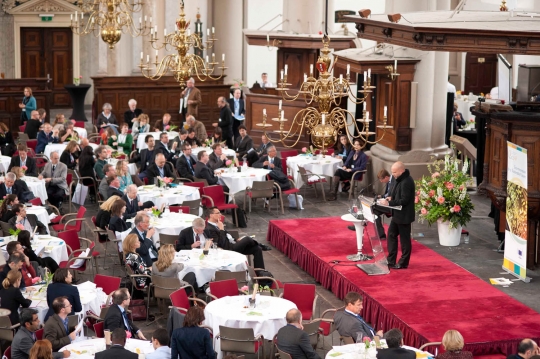
Justin sharing Low2No with the EC. Source: Europa.eu
At the Global Impact Economy Forum in DC Secretary Clinton announced a new partnership that will focus, amongst other things, on making it easier to create sustainable cities, particularly in developing economies. I was there to share our Low2No experience in the context of the question: how do public and private sectors work together to foster shared-value investment in the built environment?
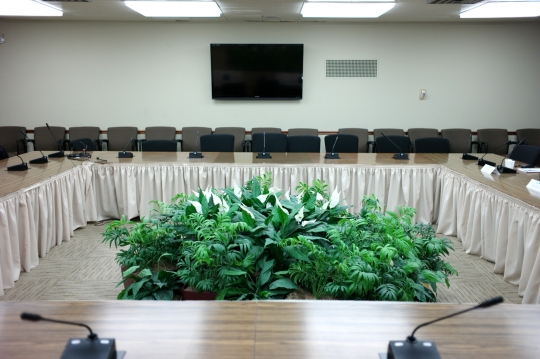
This was the most handsome patch of trapped plants I saw at the State Dept.
David Wood did an excellent job moderating our panel. I was the pipsqueak in a row of heavy-hitters as we compared projects from the block scale of Low2No, up to the entire city of Songdo, South Korea, and then infrastructure efforts of CDG in Morocco. The core of the conversation was summed up well in a comment from a South American government official who will remain nameless, as relayed by fellow panelist Stewart Sarkozy-Banoczy: I can find money to build housing, but how to I deliver all the other aspects that make a thriving community? The traditional capital investment is one thing, but finding the ability to invest in the broader ecosystem of factors that contribute to the ultimate sustainability—or not—of a community is now the challenge.
The approach we're taking with Low2No is to consider the building as situated within a larger spectrum of activities that range from the dark matter work of lobbying for (and co-authoring) new codes & regulations, exploring finacing and operational models, developing programmes to spur low-carbon entrepreneurship and citizenship, and so forth. Coming on almost 4 years into the Low2No experience, we have a pretty solid idea of how to comission and design sustainable urban environments in this interconnected way. Delivery is another slog unto itself, but one that we're happy to be in the middle of at the moment.
It was a solid event that covered a lot of ground, often times deep in the nitty-gritty of finance where I struggled to keep up (my favorite kind). Because I know that the internet loves lists, and I'm not one to disappoint, the messages I kept hearing at the event were:
- Systemic from the start: initiatives should not be done in an ad-hoc way to get them off the ground and then redesigned for scale later. The up-front strategic work should take into account the possibility/mandate of scale from the very beginning and use this as an advantage. In my own words, I would articulate this as "design every platform as a product and every product as a platform"
- Data drives the market: there are still big opportunities for anyone who can provide data (or other comparative mechanisms) that simplifies the task of comparing a variety of options, be it which charity to give money toor which ship to hire for your intercontinental logistics, etc. Jagir Shah gave one potent example: the Carbon War Room began publishing fuel efficiecency data for ships. The availability of this data natrually fed into the exsting data-crunching machines of insurance adjusters and other analysts, effectively raising the price of fuel-inefficient ships. In other words, data doesn't have to be extensive, but it should be operative and useful for the right decisions.
- Collaboration is still hard: building up enough trust to do things differently, to invest in social impact, for example, still takes time. It was encouraging to see many of the world's large banks at the forum to have that kind of scale in the room, but more than anything their participation and movement towards adding social impact products to their suite of offerings is an important act of signaling to the market culture. As we are all making tactical efforts to deliver projects and make deals, we should also acknowledge head-on the broader cultural shifts in risk and trust, and the way that our various cultures of decision-making model these. Multi-disciplinary teams are able to internalize—and appropriately respond to—some degree of these different cultures, giving them a leg up.
- Reality is still messy: contexts change and plans change. An organization's ability to cope with change (both fast and slow) is still what determines its success. Particularly in the case of systemic change, where the full extent of needs and opportunities are in continual evolution (see point #1!), bouncing between the messy details of specific situations and the smooth abstraction of the 30k view is a useful practice, particularly when the problem at hand is without precedent.
- We still need first movers: Anyone who has watched as a potential match funded grant goes unmatched and unfunded knows how painful it can be to have the promise of funding but still come up empty handed. Right now is a similar moment. there's a developing interest in social impact investments, but strident first movers are still needed. As the investment community (and organizations like Sitra!) are able to better evaluate (see points #1&2) and build relationships with (points #3&4) social impact organizations/projects we will see the sector flourish. Who's ready to take the first leap?
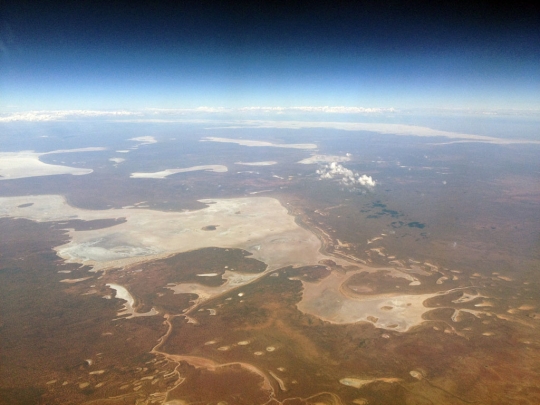
Flying over Lake Eyre, northerly out of Adelaide.
This week, the weeknote is really brought to you by Adelaide and Melbourne Design Lab, rather than Helsinki Design Lab. I've been in Australia all week, and have only the vaguest ideas as to what's been happening back home! Justin's in town, which is good, and he, Marco and Bryan have been knee-deep in our internal organisational strategy work, as well as keeping our Low2No food projects ticking over.
One thing; our Design Exchange operative #1 - Sara, embedded at City of Lahti - has got a new site live for the 'Radanvarsi' urban development around the train station in Lahti. The site is for the project competition, and citizen participation around the development in general. It's all slightly beta - of course - but will begin filling up from now on. (PS. Note, we're looking for another strategic designer in this progreamme, as part of Helsinki Department of Social Services - apply here.)
But as the team were slaving over a hot organisational strategy stove (?!) in a Helsinki which had momentarily turned its back on spring, I was in sunny - very sunny - Adelaide.
I was there for a quarterly meeting of the Integrated Design Commission Advisory Board (more info on the board here). The IDC, led by Commissioner Tim Horton, and part of the office of South Australian Government Architect Ben Hewett, is one of the most interesting design interventions in Australia. It's also one of the few other organisations worldwide also working as a strategic design capacity for core public institutions.
It grew directly from the work of one of Adelaide's Thinkers in Residence, architect Prof Laura Lee, and sits right at the heart of government - part of the Department of Premier and Cabinet. It's charged with aligning design disciplines, industries and efforts across the state. In practice, this means focusing initially on planning, architecture, urban design and other built environment issues - but given the state's manufacturing history, this also means some interesting incursions into industrial design, via prefabricated housing. In this respect, it's a little different to our mission - though we're often covering similar ground. But their work essentially concerns gluing back together core disciplines and perspectives that our societies have allowed to wander too far apart; which is certainly developing a similarly holistic view to that pursued by our Studio process.
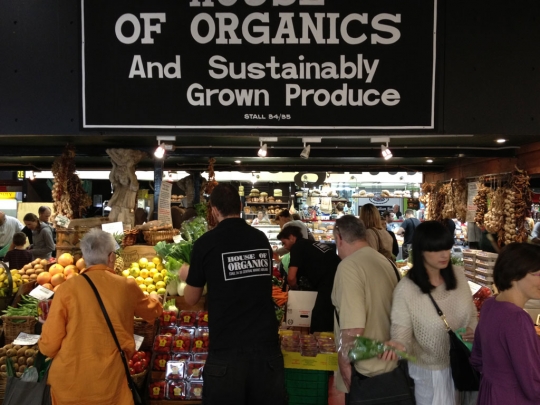
Adelaide's excellent Central Market indicates the value of local, organic everyday food.
(Tim and I often reflect on the ideal proxmity from seat of power, for a strategic design function. You need to be close to effect genuine change, clearly, but not too close as to be a political football. The IDC team seem to have it about right; see also Ben's work as Government Architect, and the major announcement of a City Design Review Panel, which was happening last week; a huge step forward to get qualitative assessment at all stages of the urban development process. As Planning Minister John Rau said of the announcement "If we are going to encourage more South Australians to live in the city, then excellent design is critical.")
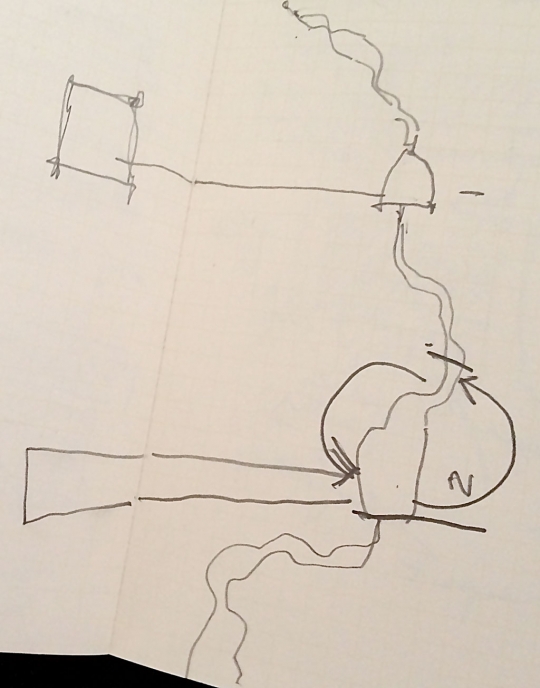
Tim Horton's sketch of River Torrens system, scribbled in my notebook over lunch
Amongst other projects, the IDC team are at the heart of the 5000+ project, which is intended to be a replicable model for citizen participation in urban planning, or more broadly, discussions as to what Adelaide is for. This is particularly interesting as regards Brickstarter and Low2No, but worth checking out in general. IDC have even successfully taken the HDL Studio format into their work - which is exactly what we hope happens by publishing blueprints in such detail - which builds on several conversations we had when I was originally in Australia, pre-Sitra.
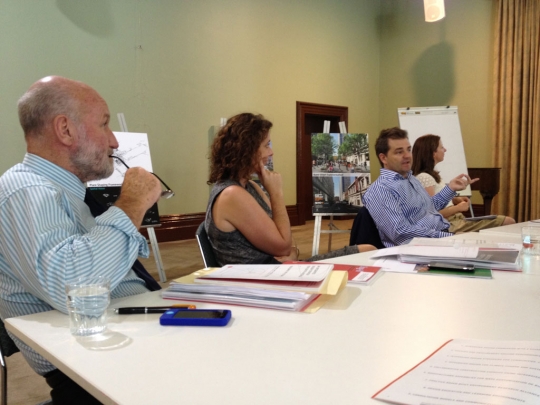
Advisory Board: Prof, Graeme Hugo, Associate Prof. Joanne Cys, Tim Horton, Jane Crosby

Advisory Board: Ben Hewett, John Denton, Dr Elizabeth Farrelly
I think Adelaide is a great little city, as it happens ("little" in comparison to Sydney and Melbourne, both of whom tend to look down their noses at it, as is the way of such things. Adelaide, like Helsinki, is a good population size for a city; it's the distribution that needs a little work.)
Like most Australian cities, it's slowly beginning to develop a sense of its own urbanity, despite a good half-century of suburb-dominated misteps, and that is good to see. The work of the IDC, and the several other initiatives in the city, will be key to ensuring a vibrant and productive urbanism emerges. It was great to see evidence of 'emergent' innovation filling the numerous gaps left over by 20th century urban policies, such as this fabulous pop-up lobster taco stall and winery, occupying a vacant parking lot. From totally dead gravelled non-space to fine lobster tacos and some of the world's best wine, and 'one-in-one-out' by 7pm on a warm Friday night. (Please excuse the dark mobile phone video, but it captures something of the mood.)
One paper the IDC delivered to the board was SGS Economics' review of the economic impact of the Renew Newcastle intiative, revealing an extraordinary 10:1 multiplier effect of Renew Newcastle, as well as other 'shared value returns' on investment. (Though when assessing these 'economic impact of cultural initiative' papers, I'm always reminded of my friend Justin O'Connor's note that no-one ever asks for a 'cultural impact of economics' study, which would surely reveal the opposite of a multipler; a divider, even?).
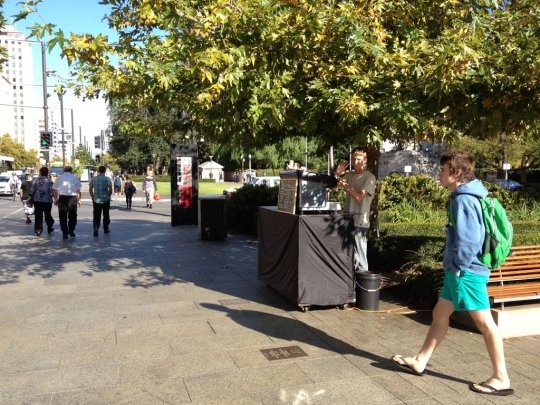
Pop-up coffee stall, part of a trial testing looser regulatory approaches to licensing in the city.
And before our meeting in Adelaide, I caught up with Marcus Westbury in Melbourne. Marcus created the Renew initiative - first in Newcastle, NSW - and Renew Australia is now based in a good retrofit of an industrial unit in Brunswick, Melbourne. It was great to catch up with Marcus; he and I worked together on The Edge in Brisbane, and he's such an original thinker (and doer) in terms of genuinely shaping cities. Notes to follow on that chat over on our Brickstarter project site. (There's a Renew Adelaide, as it happens.)

My diagram of Renew Newcastle looking for gaps in 'dark matter', during chat with Marcus Westbury
I was in Melbourne for a crazy 36 hours courtesy of the University of Melbourne School of Design, and particularly the architecture department. I met some very bright urban design masters students for lunch, gave a public lecture (thanks to all who turned up; Twitter was pretty effective at getting a few hundred in a room with not much notice.) Ditto a lecture at Arup Melbourne the following lunchtime, part of the Innovation Forum series now curated by Stuart Candy.
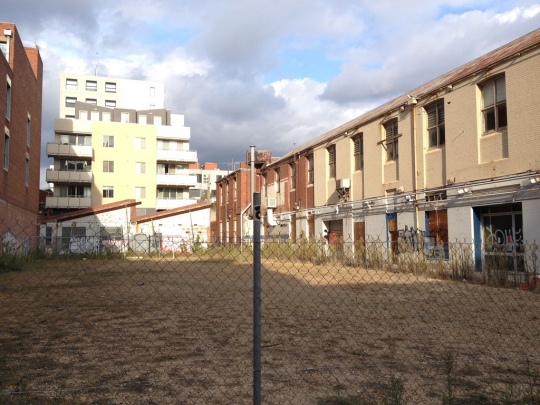
Brickstarter-friendly site, 500m south of University of Melbourne architecture department.
Back to Adelaide, and meetings with TACSI's Brenton Caffin, around where might 5000+ go next, and IDC again, advising on how to handle discussion around smart city strategies, before an incredibly useful phone conversation with City of Sydney about their exemplary recent tender for food trucks.
It was great to hear about their approach, which Helsinki - and many other cities, for that matter - can learn much from. We're trying to broaden the conversation around street food here in Helsinki - including with the City, as previously noted - and these kind of case studies from other cities are often very important in terms of shaping opinions. Again, more details soon, as this one warrants a post of its own over at Low2No.
If you look very very closely at the photo above, you'll see a string of windmills on the horizon, set against the perfect blue sky. This is Högsåra, an island that forms a small part of the archipelago that stretches from Hanko to Turku in south-western Finland.
We're here to better understand the local decision-making cultures and stories - to explore how these wind turbines got up, including the resistance to them as well as those in favour. But our focus isn't wind power per se; we're looking at this case as it helps frame the wider debates about how to transition Finland to a more sustainable 'bio-economy', as our colleagues in Sitra's Maamerkit ('Landmarks') programme call it.
So we're interested in how communities might balance the desires of individuals with the desires of the wider community, the role of authorities and institutions as well as communities and industry, how we might reorient elements of bureaucracy such that they are more 'user-centred', how to use the powerful enablers of new communications platforms, alllied to the increased appetite for local engagement in decision-making, and so on.
We've also been to the port of Hamina in eastern Finland, towards the Russian border, as described by Bryan a couple of weeks ago. In both Hamina and around Högsåra, we interviewed several of the key protoganists in both stories. More to follow.
Our expedition team - currently Bryan, Karoliina Auvinen, and Nina the interpreter (who in Rosala was translating in three languages simultaneously: English, Swedish and Finnish!) - visited both places. As a side note, in a country as big as Finland and with a history as rich as Finland, it's fascinating for a mere immigrant like me to observe the differences between the Swedish-speaking western Finland as compared to the influence of Russia to the eastern side, and then with Helsinki, where we're based, caught in the middle. There are numerous cultures of decision-making at play here, even in a country of only 5.5m people.
Developments like wind farms, which can often be contentious for some, place these decision-making cultures under a microscope. But we'll also be roving around Finland a little, looking at other case studies, as well as exploring international examples of new kinds of decision-making that might enable more resilient economies - in the widest sense of the word 'economy'.
And then we will be building something, working with some local communities in Finland, perhaps prototyping a new kind of decision-making. Please do send us any examples you think might be relevant - it's a broad topic, so there is no chance we'll have all the right angles covered, particularly at this stage.
(From an organisational point-of-view - not that you need care! - it's also gratifying to see three Sitra teams (us at Strategic Design, Maamerkit and Energia) coming together for this project, as it helps flesh out how our new organisational model might work, with a new emphasis on doing projects, run by multi-facted project teams within broad and connected focus areas. It also builds on a long-term interest of mine in civic participation, which I summarised in this entry on 'emergent urbanism' a couple of years ago. My now colleague Bryan had, unbeknowst to me, started working on similar themes, building on the promise of Kickstarter. I would then build on this idea of 'a Kickstarter for development of shared spaces and resources', dubbing it Brickstarter, our informal working title for a while. Meanwhile, our colleagues in Maamerkit were also getting interested in terms of how to turn NIMBY into YIMBY, as regards bio-economy development. All these threads have now converged in this project. Funny how things work out.)
The other reason to mention Högsara - and Kasnäs and Rosala - is that it was startlingly beautiful. A simply stunning day, with endless blue sky over endless snow-covered frozen sea. Sadly, the Baltic is now so polluted that the traditional trade of fishing is no longer tenable here (at a Mistra event in Sigtuna, I heard the director of the European Environment Agency clearly outlined it was a matter of 'when' not 'if' the Baltic will collapse.) So, as beautiful as the area still is, the place needs to find new opportunities for locals. It's hard to credit when you're faced with these pristine images, which hardly do justice to the scene, but there are significant challenges facing these small dispersed communities, amidst the other 190,000 islands around the coast of Finland. Another reason why this project is fascinating.
In other news, the 'Helsinki Street Eats' book nears completion - yet again! But we're close now. And our discussions with the City of Helsinki over street food are getting interesting. It looks like this NIMBY>YIMBY project above will be joined by work in food entrepreurship as major new projects this year, alongside the existing Design Exchange, Low2No and Helsinki Design Lab.
And just on Design Exchange, Sara Ikävalo, the designer that we've worked with City of Lahti to 'place' into a forthcoming urban development project, joined Marco and I for a good planning session on Monday. She's hit the ground running and we're working on getting a blog together for that project too - there's already plenty to report. I'll skip the details for now, but - quietly and steadily - Design Exchange is one of our most radical projects in a way; placing strategic designers at the heart of government. A real test! More to follow, though, as Sara is already making a difference.
A good, productive week.
Three polite words that begin with F: frozen (temperatures), and freedom (from fossil fuels), and food. Let's see how these unpack.
Now that winter has set in, we are regularly experiencing temperatures in the range of -10º celsius. This makes for treacherous sidewalks but otherwise adds lots to the quality of life in the city: cross country skiing, sledding, new things on the ice, and plenty of light reflecting off the snow.
Recently Dan, our colleague Karoliina, Nina the intrepid interpreter, and myself spent a day in Hamina where it was also very frozen. Located 1.5 hours east of Helsinki, Hamina used to have two industries: a port and the paper mill but the later closed down in 2008.
Luckily for them, the mill premises found a new tenant who values cheap energy and the location's essentially limitless supply of cool Baltic water: Google purchased the property in 2009 and set up a data centre shortly thereafter.
Although the Google story is interesting, it's not the core of why we went to Hamina. We were there to learn about the way that the city has successfully fostered green energy, both as an energy source and as an industry. Early indicators point to Hamina as a positive example of how a community de-industralizes itself with as little long-term pain as possible. They paid attention to larger structural changes in Finland's economy and reacted decisively to find a new way forward. Google's data centre was one positive outcome, and the other is WinWind who manufacture wind turbines. In parallel with these new developments in the local economy, Hamina's municipally owned energy company also courageously set up a modest wind farm.
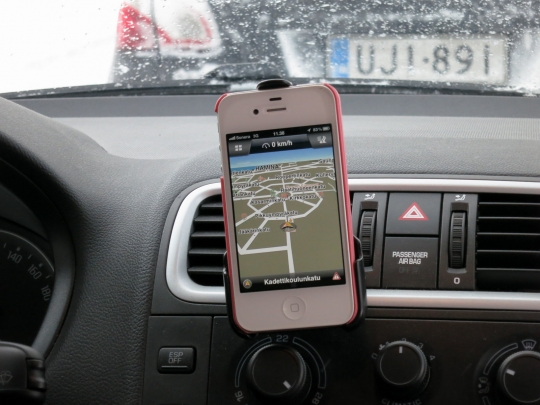
Hamina is known for having a circular town center
We wanted to understand how this happened. How does a community make decisions about its future? Or in other terms: how do communities make shared decisions from a shared value perspective?
Shared decisions are those which are bigger than any one person. Things like building a new road or rail, cordoning off a nature reserve, or passing a law. And shared value is measured in financial as well as social and ecological capital. Although the term is borrowed most recently from Michael Porter, the basic concept is by now quite generic—you might even argue that figuring out shared value is the challenge which underlays all others.
Our trip to Hamina was the first bit of research into this. How did they get the idea to build a wind farm? And how did it get negotiated in real space, with real euros, real local politics, and real personal opinions? How did Hamina decide to open its port area to new industries? How did Hamina propose for itself a new future?
In the coming weeks and months we'll be visiting other communities that have made—or failed to make—shared decisions as we try to better understand how we might help these processes flow more easily and productively.
One of the areas of focus is a phenomena called Not In My Back Yard (NIMBY) and how we might crack open more opportunity for Please In My Back Yard. In essence, we're interested in how communities balance the right to express negative opinions with the civic obligation of participation in the public realm, in local economies, in politics, in society. So how do we make it more meaningful and easier for people to engage in shared decisions? That's what we'll be focusing on in the area of work we've been calling Brickstarter internally.
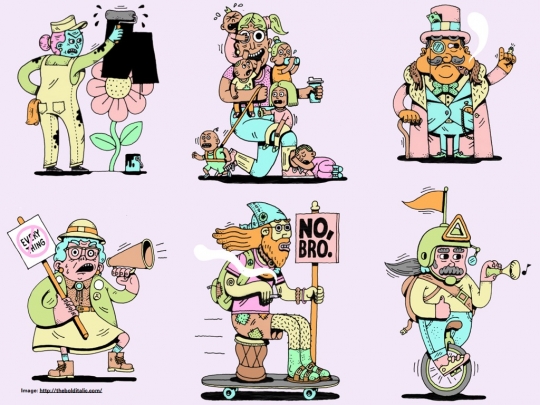
A collection of NIMBY archetypes by Miquel Hudin drawn by Loren Purcell
Justin, Marco, and Johanna spent most of Friday in Lahti working with the city planning department there as part of our Design Exchange Programme. Things there are off to a good start with an ambitious timeline. We are also working on a new website for the exhange participants to share their experiences regularly.
Internally at Sitra we continue apace with work on tools, systems, working culture, and spatial resources. The first three involve lots of meetings in conference rooms, the latter involved one meeting in a design studio. It's also worth noting that there's a new Sitra.fi website!
Dan was over in London this weekend giving a presentation at The Design of Understanding. It's a safe bet that you can expect a write-up of some 10,000± words from him in the nearish future.
As always, an update on the food work. We spent a bit of time in Tukkutori with Elina and Ville, sharing notes on what we're up to and the same from them. Tukkutori is Helsinki's wholesale market and will be opening to consumers in the fall. Lots of exciting stuff planned there and we're seeing how we might be invovled, particularly with an eye towards strengthening the pathways for good ideas to grow up to be good businesses and good regulations and policy.

You never know what you're going to find in Tukkutori
And yes, some mockups for print. The food booklet we're working on may or may not come with a poster.
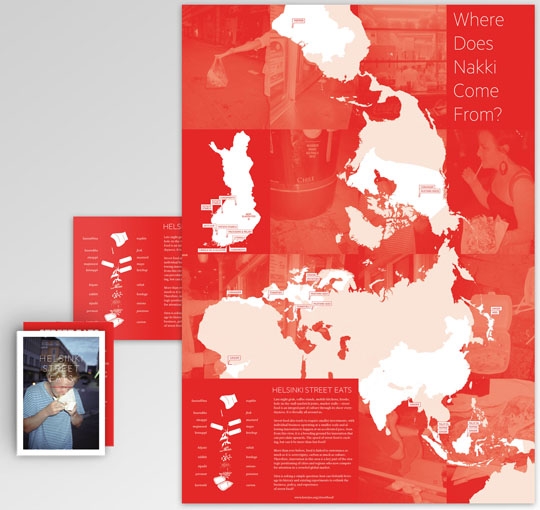
As I write this post there's a bubbling hive of activity behind me inside the Flanders District of Creativity in Leuven, Belgium. I've come to sit in the back of the room while the government of Flanders hosts a studio on child poverty. But more on that soon. This is the culmination of a particularly hectic week with two book launches in the US, some fast-paced work on a handful of projects in Helsinki, and now Belgium.
Let's start in New York. Justin, Marco and I were pleased to host a launch party for In Studio with Amb. Ritva Jolkkonen, currently the Consul General of Finland in New York. She very kindly welcomed a group of designers, NGOs, and public sector people for a gathering at her residence which features a rather stunning view over central park. Naturally, this is the one time (seemingly) when I did not have a camera on me. You will have to imagine the view.
On Tuesday Marco spent the morning presenting at and moderating a discussion for an event hosted by MIT's Collaborative Initiatives. I wasn't in the room, but from what I hear he did a bang-up job keeping a group of big-wigs on track.
Just to make sure we're not being lazy, we also hosted a book launch in Cambridge, MA that evening, seeing as we were already in the neighborhood. Turnout there was good and it was nice to see some familiar faces.
Back in Helsinki, I had a brief meeting with the Helsinki Ympäristökeskus (Environment Center) relating to our ongoing street food work and Dan and I had the pleasure of meeting Stuart MacDonald. Stuart was in town from Glasgow for an event hosted by the British Council. He alerted us to some of the strategic design work that is bubbling up in the UK, particularly around community planning. We'll be digging into that more in the future as Brickstarter ramps up.
Oh right, Brickstarter is ramping up.
Speaking of the UK, Dan was in London for something less than 24 hours to participate in a meeting of the minds that attempted to merge neuroscience with... urban planning!
Amidst all of this Aalto University reversed an earlier decision about the name of the school which contains the departments of art, design, and architecture. Previously they had announced that it would be called the School of Arts and Creativity, but after significant public uproar it will now be called the School of Art, Design, and Architecture. Personally I see this as very positive. Claiming 'creativity' as a namesake was not only a little greedy, but also rather devaluing of the disciplines that the school represents.
The studio here in Leuven is getting ready to make their final presentation so I will hastily close this weeknote and leave the details of what's happening here for the next post.
First, a note from one of Sitra's other projects called Reviving Village Within A Town. In an effort to enable young people to have a more active role in co-designing the services that are available to them (like sports programmes), and therefore also getting more out of these services, we find two intertwined lessons. One about time and one about scale.
“People are active themselves instead of waiting for others to do things on their behalf. After all, local well-being is built on the people’s own initiative and activity,” [project manager] Mira Sillanpää points out. “You must also remember that it is not always about creating all-embracing solutions for the long term. Small changes can also have a huge impact. If the needs of the local residents change, the services provided by local authorities must change accordingly.”
In Mira's observations as quoted above, there are familiar tones of the ethos of prototyping, of beta, and of iteration. But perhaps more profound is what she gets to at the end: that times change, needs change, and that our public services should be similarly agile. In other words, being able to end programmes gracefully is as important as starting them intelligently.
And this ties to another aspect of the project which is embeded in the very name of the work: Reviving Village Within a Town. Lurking here is a recognition that scale matters too. The project is located in Hämeenlinna, a town that includes a number of smaller villages. By making room for local communities to conduct low-risk experiments in their own areas, we gain the ability to test and iterate at a more manageable scale before growing or replicating what works to other communities.
In other words, early innovations are not for everyone, and not for everywhere. Utilizing the small scale—in both time and space—allows us to be more sophisticated about our risk assessments. More of this please.
Twelve thousand kilometers away, in sunny Buenos Aires, the government there is also thinking about the power of the small scale, albeit in different ways. While in Argentina to give a talk as part of the CMD international design conference, I noticed that some of the parks have signs which implore residents to visit a Facebook page like this one. One finds a brief bit of history about the place, an invitation to share stories, participate in events, and to use the public space to organize your own functions. Smart, simple, cheap.
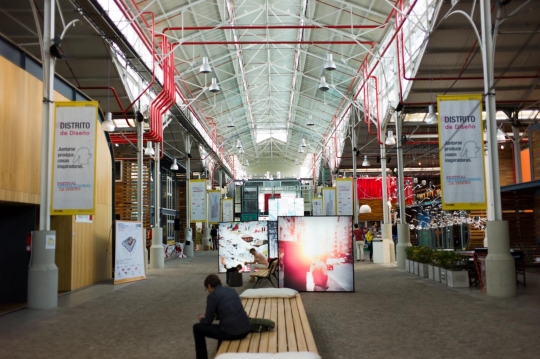
CMD is housed in a large building that used to be a fish market. It's vast!
But to CMD, the main point of the trip. The Centro Metropolitano de Diseño is a facility sponsored by the city government of Buenos Aires in an attempt to boost the creative industries. It's a bit similar to the the Design Forum here in Helsinki, except CMD also includes incubation space for young design-led companies. Under the ambitious leadership of Enrique Avogadro, CMD are expanding their focus to look at the potential for design-related business and programmes that are able to generate social capital in addition to financial capital. Being located next to one of Buenos Aires' villas provides extra imperative. This is the context in which I was there to share Sitra's work on strategic design, and particularly what it means to practice design in a public sector context.
Back here in Helsinki, as we continue to develop our work on the mysterious exchange project, we've been looking at things like this Bloomberg Innovation Delivery Fellowship. And then for no particular reason other than the fact that we saw it from a couple different people on twitter, also MIT's Atlas of Economic Complexity.
Dan spent a couple days in Sigtuna, Sweden where he was part of an international workshop hosted by MISTRA, The Foundation for Strategic Environmental Research, who are undertaking an ongoing indea development programme to identify new areas of research. After that he and I were consolidating thoughts on some small renovations to the Sitra tower.
Marco was in Finland but in and out of the office, including giving a talk at a Fortum event as well as taking part of the ongoing World Design Capital public sector working group.
Justin took a day trip from Boston down to New York to meet with the consulate there and begin preparations for an upcoming book launch later this month. He's also taking care of logistics for a launch in Boston, so if you're interested in either of these, check back in a week or so for further details.
And daylight savings time happened, so it's officially dark here. This was week 137.
If you look closely, you’ll see many of the rooftops of Bucharests’ Lipscani quarter glimmer in the sun, reflecting newly applied copper and tin back to the sky above as if to suggest that first and foremost this metropolis is rebuilding itself under the eyes of god. While this city is indeed dotted with its fair share of sites bearing religious importance, there’s no mistaking the zeal with which modern Bucharest is being rebuilt by the people on the ground. It’s a place where one encounters making and re-making almost at every turn and it's a great coincidence that the neighborhood at the forefront of this change is one with a long history of trades and guilds. Romania is not waiting for any heavenly bodies to anoint them, if the organizers of Connection have anything to say about it the focus here is on linking up the market and the citizenry into a society that is sustaining and sustainable. I’ve come here to keynote Connection, a conference on social innovation put on by an ambitious group called Ropot. More on this in a bit, but first: the city.
Lipscani plays the part of a familiar European tourist district, replete with terraces sponsored by beer companies, street vendors, and the steady thump-thump of Euro beats oozing out of cafes with more neon than customers. On the surface it can be generic, but with a closer look one finds moments of genuine and endearing locality. Many of the wares on offer at the street market, for instance, appear locally produced and this includes the sweets (which are very sweet). Pockets of the 19th century, such as the popular brewery restaurant Caru' cu Bere offer a hospitable glimpse of the pre-communist city, not to mention a hearty meal to beat back the chill of an autumn Sunday.

A local wedding amidst the tourists that fill Caru' cu Bere to the rafters
According to locals, the original dream of the reinvigoration of this neighborhood was to create an artists’ quarter. Although the current iteration is more gentrified than this—and it’s no Postdamer Platz, so this gentrification is very relative—gems like the small bar Atelier Mecanic shine through. It’s a sort of high style junkyard where the local cool kids drink amidst a setting various mechanical trinkets repurposed as thoughtful decoration. The communist-era leftovers lining the walls are strong material symbols and it’s tempting to see them as trophies of the conquest, now drained of their robotic animation and relegated to watch from their perch on the walls as contemporary Bucharest thrives. It’s the kind of place where one imagines a new generation of intelligentsia congregating, like the editorial staff of Decat o Revista, an upcoming local magazine on the model of “Wired meets the New Yorker”, or the group of architecture students sketching across a narrow table while I visited.
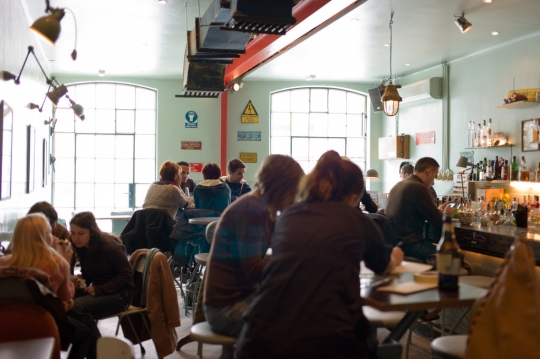
Sunday afternoon in Atelier Mecanic
But one does not come to Romania without thinking about Dracula, and so to his castle we go. Three hours north of Bucharest is the town of Bran, the population of which has just grown by 80 for Connection, a long weekend focused on building social innovation capacity within central eastern Europe. Initiated by the enthusiastic four-person core of Ropot and executed with a network of partners, the event brings together a wide range of people from Romania and neighboring countries to bring new ideas to the conversation. Carefully crafted as a multi-day event, it’s also designed to build connections and spread knowledge laterally.

Don't let the looks fool you, although the atmosphere was decidedly relaxed, Connection was carefully orchestrated
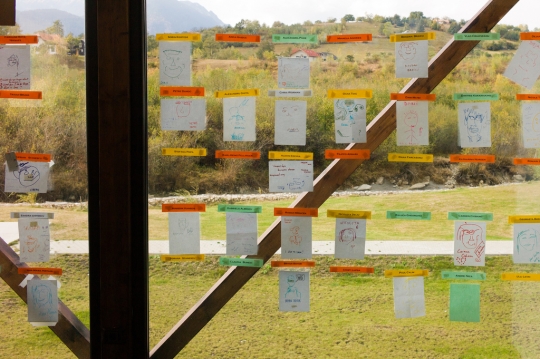
Blindly-drawn portraits posted as a who's-who of the event
In the spirit of the many social entrepreneurs in attendance, I came to make a simple pitch: details make or break big picture ambition, and design approaches are a useful lens to pursue the details and the big picture concurrently. Under this umbrella I took the opportunity to share Sitra’s work on projects including HDL, Synergize Finland, and Low2No. The latter containing an excellent example of the big picture/small detail balance in Sitra’s efforts to remove barriers to large scale timber construction in Finland. This is driven by the big picture goal of a carbon neutral built environment but involves to specific (but unexpected) actions such as working to change fire codes so that large scale timber construction is possible, not just for us but for others as well.
But I started my talk with a simple observation from the streets of Lipscani: we live in a world of multiple overlapping systems and yet these are all too often sub-optimized in isolation of each other. In just about any European city you can observe this for yourself in very concrete terms by paying attention to the downspouts. Often you will find that downspouts and other external plumbing takes a less than direct path to the ground, and occasionally one that involves significant conflict, such as the photo above with a drain violently puncturing through the decorative plaster work of the building. This is a visible symptom of the architect and plumber not agreeing on which system will take precedence and which will gracefully defer.
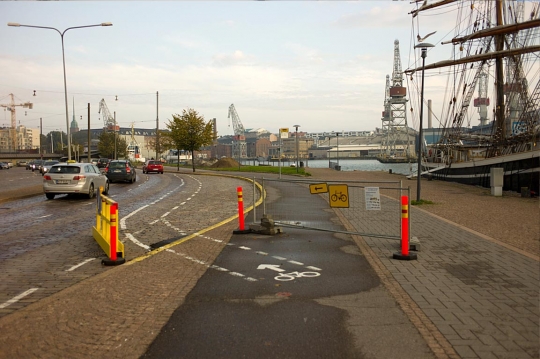
The rigidity of different systems becomes extremely apparent in moments of forced intersection
It’s an example of the impossibility of agreeing to disagree when decisions are involved. We can agree to disagree on a philosophical basis because this stays in our minds, but when it comes time to do something in a world of finite space, time, and material, action requires agreement—or violence.

Function piercing decoration, or: the hard considerations of gravity, flow rates of water within a pipe, and the threat of water damage against the soft factors of the cultural value architectural form, symbolic meaning of a building, and connotations that a physical structure conveys onto the organization that sits within it
At the core of this observation, and my pitch that design is positioned as a lens to help us make sense of it as a practice, is the observation that we’re still often clumsy in bringing synthesis to hard and soft factors. In the example above, rain water, flow rates, gravity, etc. vs. architectural form, cultural meaning, social connotations.
To resolve these two into a harmonious whole, as one is able to observe in more considered acts of architecture, requires a synthetic approach that balances the demands of hard and soft factors. This is something that the best businesses do as well. Nokia had touch screen phones much before Apple, after all, but the technocratic approach they took to conceptualizing a phone as a gadget inhibited full consideration of the softer side of the cultural role of a cellular phone. (For what it’s worth, this is demonstrably different now that Nokia Design is under the leadership of Marko Ahtisaari).
And so one of the central aspects of the conversation at Connection was the difficulty of bringing hard economic costs and soft social benefits onto the same ledger so that an attractive investment case can be made to appropriate investors. As groups across Europe are currently struggling with this issue, I was not surprised to see the same here in Romania. What encouraged me, however, was the verve with which some of the attendees took up the challenge.
As groups which aspire to support and enhance local communities increasingly look to social investment rather than grants, an important bit of mindset change is occurring. The more we as a society are able to entertain social returns on investment the closer we are to obtaining one of the basic mechanisms of a healthy social society—one that neither forces each individual to be a self-sufficient island nor forces the state to make unrealistic promises.
Investments come with investors, and investors have a moral obligation to put their money to best use. In the past this has more often than not implied the best annual return in financial terms. Looking forward, the notion of returns will slowly become more open, perhaps also including social returns expressed in monetary equivalent in a manner similar the cap and trade of carbon emissions.
The reason why I gave up my weekend to participate in an event in the middle of Romania is because I wanted to see how this part of the world was thinking through these issues, and what I might be able to bring back with me to our work in Finland. There are a handful of leads I will be following up, but the thing that came through most clearly was the drive and commitment of the participants to devise new ways of addressing the issues they’re concerned about—be it corruption, poverty, social exclusion—with a constructive eye towards the future. Connection itself is a testament to that by virtue of the fact that it eschews the typical conference format of individual grandstanding and hands-off consumption of presentations and instead delivers a weekend of capacity building.
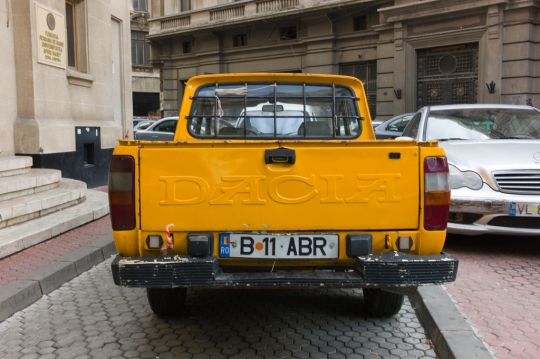
Romania's native carmaker, Dacia
We took turns sharing experiences in finding the right product, developing a business case, and what to look for in policy EU developments that will affect social innovation. But also about very pragmatic skills and tools such as learning how to hone a pitch and how to skillfully use media—both traditional and non. These how-tos were anchored by a mix of stories on the ground from individuals such as Chris Worman who is developing an innovative community ‘loyalty card’ scheme in central Romania and Dr. Anna Burtea who is exploring new commercial opportunities to enhance her foundation’s reach and impact. As examples of social innovation in development they were not all easy-breezy success, and that’s what I appreciated most. The Connection team managed to create an environment where frustration and failures were just as much a part of the conversation as success and scale.
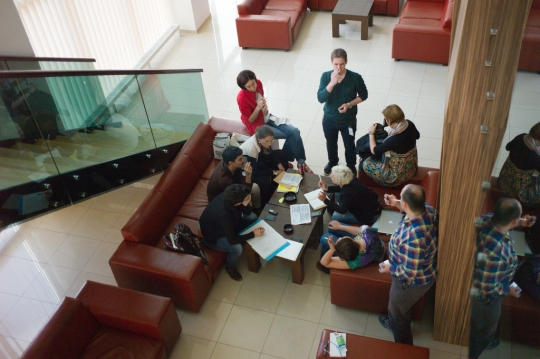
Ropot and their co-organizers take a moment to regroup and adjust plans for the next session
So when I write that I left the event feeling optimistic it’s for the same reasons that I enjoyed my brief time traveling the landscape of Romania: it’s a place that is still in the habit of making things, but equally one that can remake and repair when needed. Perhaps because of the relatively high levels of contrast visible even on the street—I did, I must confess, nearly escape a pack of angry wild dogs—I detected in my fellow attendees both a shared sense of responsibility for the future as well as an imperative to find one’s own specific contribution.
Back in Bucharest, as I type this blog post I am using a wifi network with the password “2030wifi”. An eye on the future, indeed.
Catching up, catching up. As predicted, Autumn is here and the pace is picking up. Several of us are just back from Copenhagen Design Week, where we did a number of productive things, as well as just enjoying that fine city.
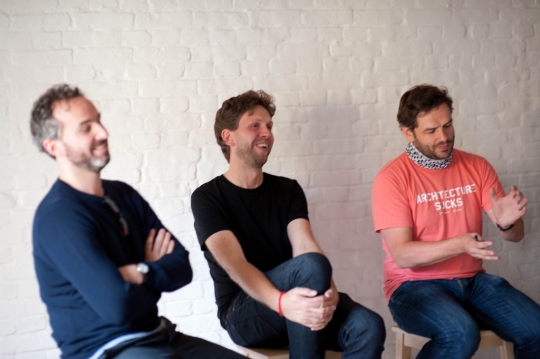
Me, Karsten Schmidt, and Matt Jones, photo courtesy of Matt Cottam.
I was there to speak at the Copenhagen Interaction Design Institute (CIID), with Matt Jones of BERG and Karsten Schmidt of PostSpectacular, organised by the great Matt Cottam (Tellart etc.) and Alie Rose (CIID). The talks from Matt and Karsten were both chock-full of challenging, brilliant thinking and as ever it was a privilege to share the bill with them.
I'll try to post some thoughts from my talk here (or there) later, but essentially it covered the shift from interaction design at the urban scale to strategic design at systemic scale, and the importance of designing both the matter (the objects, spaces, services) at the same time as the meta (the context, the organisation, the culture.)
Low2No is one of our primary examples. Here, what looks like a building project is actually a 'trojan horse' or 'hook' for a whole series of other systemic changes, around the forestry industry, smart cities, food culture, design methods, ownership models, carbon accounting, innovation environments and so on. So this was 'From Matter to Meta' and back again. There's a lot more to come here, but thanks to CIID for organizing and thanks to an attentive crowd, particularly taking the time out from a sunny Saturday afternoon.
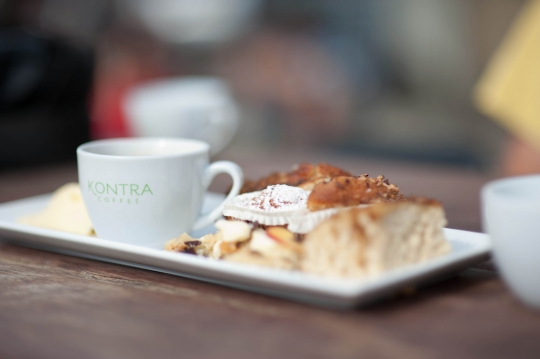
Toldboden brunch, photo courtesy of Matt Cottam.
Bryan and I joined Team CIID + BERG for Sunday brunch at Toldboden, which we suspect may be currently the best brunch place in Europe, if not the world. We understand that this is quite a claim, but still.
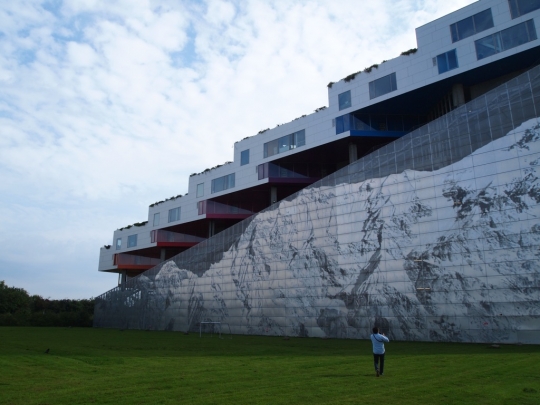
The Mountain, by Bjarke Ingels Group, Ørestad.
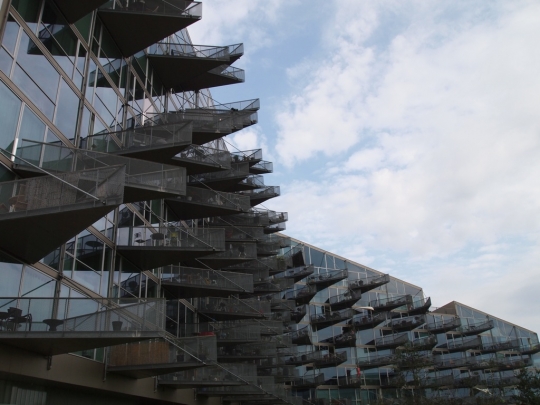
VM Buildings, by Bjarke Ingels Group, Ørestad.
Then just time for a quick excursion to Ørestad, to see a couple of fine, and by now well-known buildings by Bjarke Ingels Group (but also the fairly bereft streetscape there. Hmm.)
Bryan and Marco were in town to participate in a conference organised by our good friends MindLab. 'How Public Design? Leading Change in Government' was an international seminar featuring government, academics, design practitioners, and others. The foundations for the conversation were laid down by rich stories and case studies about existing design work within the public sector; the conversation itself often focused on how to scale this work up, and what new cultures of public sector might result, or otherwise be enabled. Thanks also to MindLab for a great event.
As well as general INDEX Award shenanigans (and congrats to one of our collaborators, Alejandro Aravena, for his firm Elemental's award there) we were also in Copenhagen to meet a consignment of The Book (around twelve copies sent to our hotel).
We finally have it in our hands. Called 'In Studio: Recipes for Systemic Change', the content unpacks the studio model and its use in terms of understanding the architecture of systemic challenges and quickly sketching out coherent, practical and imaginative visions that address such interlocking problems. Hopefully you'll find it a useful resource and a good read. Again, credit to Bryan, Justin and Marco for producing a genuinely original contribution, and particularly for Bryan for handling the production. The book looks and feels great, thanks to design by Two Points in Barcelona.There's a foreword by Geoff Mulgan of NESTA, and an afterword by our president, Mikko Kosonen. We'll post about the book separately, very shortly, including details on how to get it.
We've also been working on a dossier around design ethnography; please have a look and let us know what you think. Any comments gratefully received, particularly other references or case studies you think we should link to.
In other work, we've been working hard on Low2No, and I've been picking up two threads in particular: the 'smart systems' work (our informatics-led angles developed by Arup and Experientia) around the building, and then how our organisation develops in the context of the new building. The relationship between building projects and the organisations that inhabit them is complex and symbiotic, and as part of the client body for the block, and ultimately an occupant, we'll be using this opportunity to continue the development of Sitra the organisation too.
In terms of 'smart systems', we're trying to develop a more sophisticated understanding of what this might mean, particularly as compared to yer usual building project. On a typical project, ‘smart systems’ can essentially be seen as shorthand for 'automating everything in sight', which we feel would remove the opportunity for engagement, agency and responsibility from the various users of the building. Which doesn’t feel particularly smart to us.
So we're trying to build up a simpler but more engaged relationship between occupant and other users, building, building technology, organisation, and city. This should take advantage of contemporary thinking around smart systems and smart cities whilst preserving, even expanding, the role of people within and around the building. This is partly to do with our strategic objectives around 'sustainable well-being', and the desire to produce replicable strategies for systemic change, but also to do with creating a simpler, more effective, more enjoyable workplace.
These words might come back to haunt us—until a building is built and occupied, one never knows—but we want the exact opposite of the all-too-familiar hotel room experience in which you're searching for the impenetrable remote control required to turn on the standard lamp. Some things are not problems that need fixing.
Some are, however, and we think we're on to something new and useful with our approaches here. We'll report back on this too, as it develops, on the soon-to-be-relaunched Low2No website. (Yes, I'm aware this is turning into a series of nested links to future posts.)
In the aforementioned CIID talk, around matter and meta, one thing I touched on was redesigning the context around products, services, relationships. Or, as I put it here, "You can't design a transformative service without redesigning the organisation."
This follows the legendary Finnish architect Eliel Saarinen's quote: "Always design a thing by considering it in its next larger context - a chair in a room, a room in a house, a house in an environment, an environment in a city plan." i.e. the context is often an organisation, and so a complex net of relationships, one way or another. As I pointed out in my talk, I think you can go the other way too i.e. design the context considering the thing it is intended to produce. Again, it's symbiotic.
With this in mind, our work in terms of organisational change at Sitra is therefore part of this building project, part of this ICT procurement, and so on. Given that Low2No represents one component in another stage of development for our organisation—a Sitra v4.0 perhaps—we have also been exploring what a Sitra v3.1 or v3.2 might be (this numbering is just an example, as organisations are actually in multiple stages of development simultaneously; it also deliberately avoids using the dread word '2.0'!).
These are small-step experiments that we can do right now, iterations along the way to the new organisation in the new building. These are never binary or direct relationships i.e. the new building does not 'effect' the new organisation into life from day one, nor does a new organisation necessitate or articulate a new spatial context. It's never that simple.
So the .1, .2, .3 series of hops in effect enables the organisation to 'try on' new working methods, relationships, identities, new layouts, patterns and habits. It 'de-risks' the change implied to some extent—it makes a new building three years away into something more tangible and at-hand—whilst enabling the kind of instructive forward momentum that prototypes bring to other fields.
Not that Sitra needs redesigning, but Bryan and I did some work at our recent summer awayday in the beautiful forest around Mikkeli, helping our teams constructively imagine some new working habits, patterns and spaces. We may even be able to prototype some of these in our existing building in Ruoholahti, which helped this become more than just a paper exercise.
Oh, and I've also been writing up our research into food culture in Finland. More on that soon too!
Lots of little things, these last weeks. Perhaps this is appropriate since some of the trees around town are already starting to let go of their leaves. Increasingly, there are lots of little things all over the ground.
Justin and I have been doing a bit of work on a new website for Low2No, but it's mostly him down in the mine at the moment. I'm pitching in with advice here and there as we navigate that towards launch in early September.
Marco and Justin have been looking after the Low2No block itself, as they do in some form or another just about every single day. Justin was in Berlin meeting with our architects, Sauerbruch & Hutton, on the design of Sitra's new offices. Meanwhile Dan and I have been working in-house on the continued development at the intersection of Sitra's offices and the cultural aspects that this change will open up. In the process we've been making lots of lists, often involving spectrums or continuums, that try to articulate the qualities we're looking for in the new offices. Boxes, be gone.
We shared a brief but good discussion with the Elinvoima team trying to help them narrow in on a fertile topic for the next round of the forum. It was a discussion that spanned from the invention of democracy to the national anthem of the Czech Republic and the rhino-shaped capital of South Sudan. Marco was with them again for a longer planning session.
True fact: the team was in Lahti for half a day and the train ride back (and subsequent lunch) were some of the most productive hours of the entire week. During which time we revisited the conversations Dan mentioned last time and got one step closer to An Answer. I suspect it surprised all of us how quickly a disjointed set of possibilites seemed to lock into place just at the end of lunch. Undoubtedly this will have jostled itself loose again by next week, but as long as things come together for a moment of clarity on a regular basis we're on the right track.
Otherwise: more book related odds and ends, a visit from Sanna and her three month old baby boy, sorting out our need for interns (get those portfolios ready), a braindump from the legal team, and some hurried videography shooting ghostly clouds dropping rain. Lots of little things.
Back in the office after 4 days in Hong Kong and Shanghai where I reconnected with many of the local developments with an eye towards its impact on our work at Sitra. By now everyone is quite familiar with the Chinese scale of development but what really caught my eye was how they're doing it, and the numbers behind it. In Shanghai I discussed the sustainability challenge with Prof. Wu, Vice President of Tongji University, comparing the US and the Chinese context and model.
Here's an interesting fact that Prof. Wu was quick to point out: China has 1/6th the developable land the US has, but 4 times the population. This is a factor of 24, meaning that China has to be 24 times more efficient just to meet the US (which is far from the golden standard in sustainability!). So the question in China is not about copying, but rather of redesigning the model, something that is at the heart of what we do.
The other discussion thread that sparked my interest was the fact that the Chinese were quick to distinguish that their politicians are “selected rather than elected”. This is an interesting distinction, making the public sector more akin to business than the European model.
The CEO—so to speak—is selected by the Board of Directors rather than elected by its employees. And in this sense the public sector is more businesslike in its willingness to experiment and R&D solutions. Clearly there are both upsides and downsides to the two political models, but what makes the Chinese context interesting is the coupling of a grand redesign challenge with a system that is more attuned to risk-taking.
In Finland we have a public sector which is highly developed, but our challenge today lies in our ability to move into uncharted territory, rather than improve the existing. How else will our aging society be able to meet growing service needs with a diminishing tax base? How will we meet our sustainability challenge within an energy and resource dependent economy? These are not efficiency challenges, but rather redesign challenges.
And like China, we will have to clarify our attitude towards risk. Doing new things has an associated risk, but doing nothing is arguably much riskier. So what is Finland’s new relationship to risk?
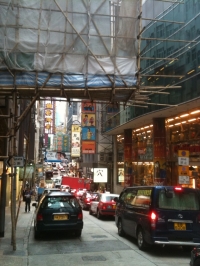
On the busy streets of Hong Kong
In Shanghai I met up with local practitioners too, to complement the “top down” discussion with a grassroots picture from the ground. One of the highlights was to reconnect with Bill Yen, who is doing great at his RMT practice. The practice field is charged with a passion to do, achieve, and redefine… something which is quickly becoming a rarity in our corner of the world.
While elusive at times, “passion” is something at the core of the European innovation challenge. In this sense while I have my own issues with the recent elections in Finland, it has helped inject a moderate measure of passion into our society. Let’s see if we can maintain an upwardly trend on this.
In Hong Kong, I visited the offices of OMA and was generously hosted by David and Betty. We discussed the changing nature of their practice and a continuing shift from designing buildings to redesigning opportunities. Of particular interest is their recent work with the local metro authority, which involves rethinking the idea of efficiency (how could you otherwise improve one of the world’s most efficient subway systems? A task they were asked to do).
My last anecdotes come for the Design in Education conference that I attended while in Hong Kong. Thank you Lorraine Justice and Ken Friedman for leading on this critical issue! While stimulating overall, my take-away from the event was that there is a very, very broad spread on the definition of design and design research within the academe. It made me wonder if one can even draw a boundary on the design community.
But perhaps the leading question conveniently boiled down to yet another number: it costs society on average $500,000 to educate a PhD in Design. How do we define the return-on-investment discussion on that investment?
Some vignettes from these two blurry weeks.
—
It's monday and Carl Mossfeldt of the Tallberg Foundation stops by for a chat at Sitra. Our two organizations have a region and a culture in common, not to mention a lot of overlap in our respective missions, so how can we work together? It starts—like many things—with a long lunch.
By coincidence, later that day Marco travels to Stockholm to share Sitra's work on strategic design with Members of the Swedish Parliament and the design community at an event organized by SVID.
—
Marco and I are in a conference room with Sitra's Energy and Landmarks programmes, spending a couple hours on a session to assess our combined activities that touch on land use issues in Finland. We're doing more and more of this lately. It doesn't feel like facilitation, but I suppose you could call it that. It feels more like being a portfolio manager of ideas. That was Wednesday.
—
Next day same thing, but this time with Sitra's Synergize Finland programme who we are assisting by organizing three studios next month. With about four weeks till the kick off there is a constant buzz of activity. We're revisiting the details that have been confimed for months to make sure they're still supporting the way the plans have evolved. "How much freedom do we have to adjust the space, did you say? Can we put a curtain here to add acoustic isolation?"
This is our first time opening up the operating model of the studio to people outside of our own small team, so it's a good learning experience. The most painful "whys" are the best ones and most important ones to answer—to make explicit. There are alot of "whys," especially around the role of the softer details.
—
Another Monday: I'm standing in front of 30 people in Bilbao explaining Sitra's use of strategic design as a way to match vision, which can be powerfully vague, with intent, which requires more focus and specificity so that it may guide action and decision. I was delighted to be presenting as part of the 'faculty' of the Young Foundation's Global Innovation Academy (GIA) inaugural programme. We also had a chance to do a quick iteration of the network mapping method that HDL initiated last year in our 2010 studios.
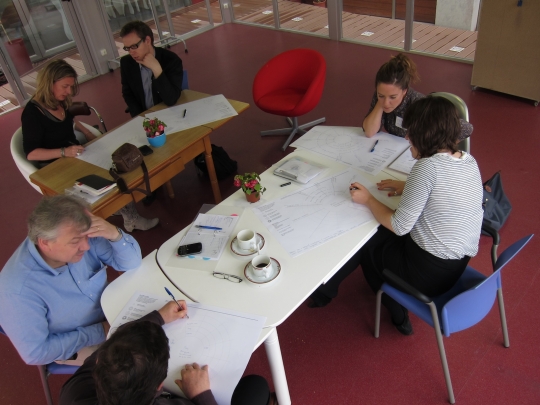
A snapshot from the event in Bilbao
The academy's goal is an important one. If I have to put it into simple words I would say that their challenge is to make social innovation the norm within the public and 3rd sectors. When that happens it will cease to be the buzz-enabled "social innovation" per se and become, more simply, the new definition of good public service. Best of luck to Andrea, Cynthia, Louise, Rob, and the team. We'll be following along!
—
Tuesday: an SMS arrives heralding a successful decision in the Helsinki City council with regards to bicycle lanes around Töölö bay. This came after a breif chat with Martti T. wherein he took it upon himself to visualize the issue using Sketchup, and in doing so change the nature of the debate. We hope to have Martti contribute a guest post on the decision in the near future. Until then we take it as a positive sign that even simple visualizations can have a transformative affect on decisions.
—
Friday. Finally Friday. It's all hands on deck for Sitra's Strategy team and we're huddled around the 14th floor conference room to learn some tips on design ethnography from Ville and Nuppu of WeVolve. This is one small part of the on-going changes at Sitra. It feels good. It feels like an exciting way to end week 108.
